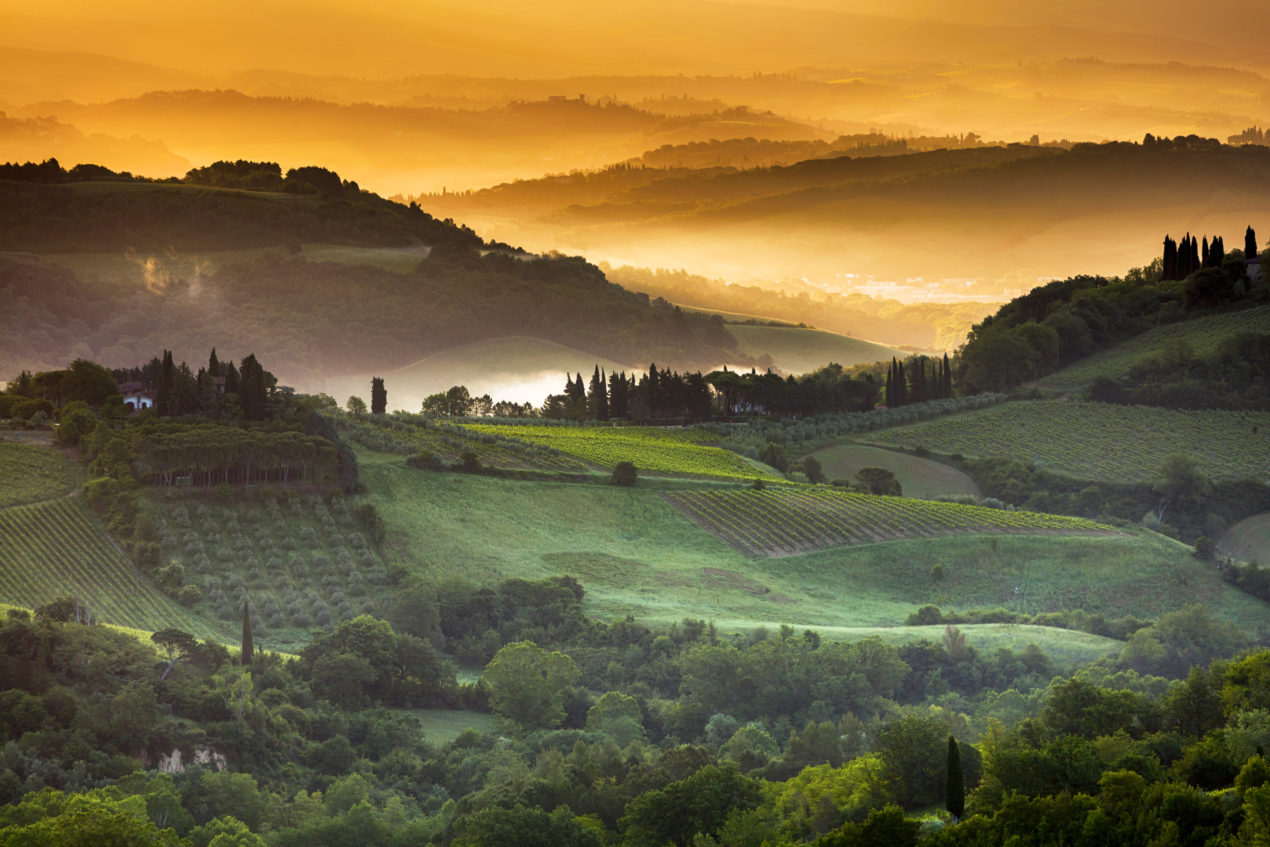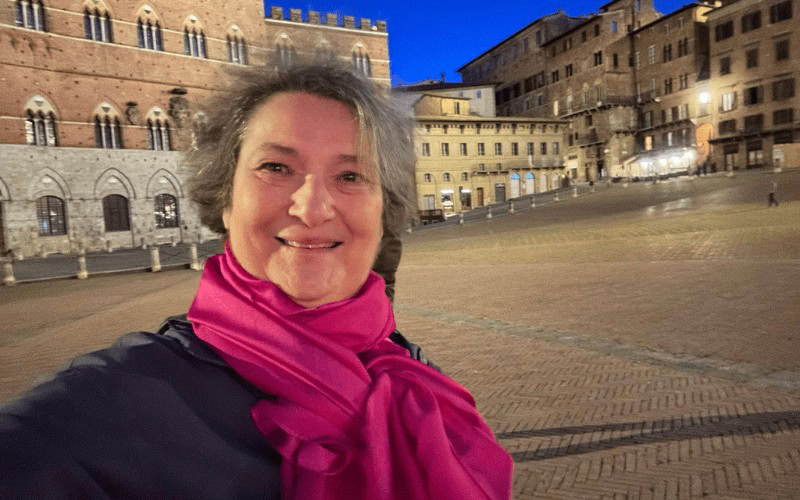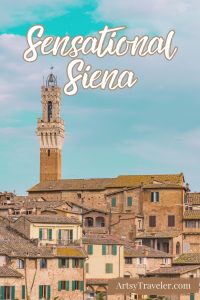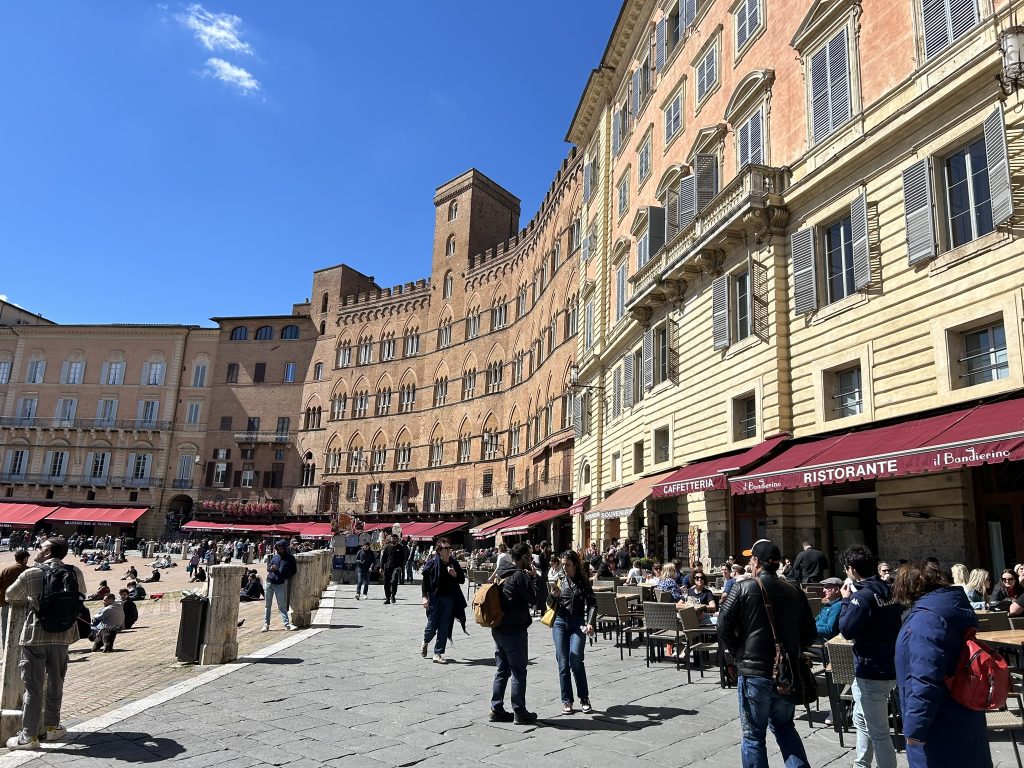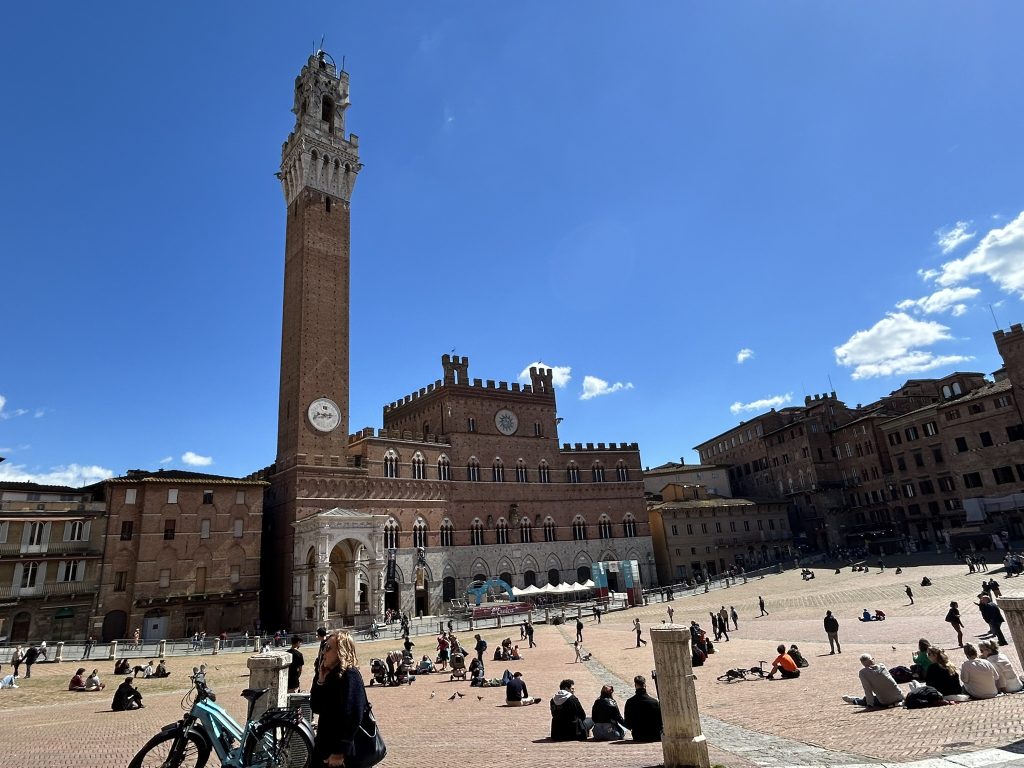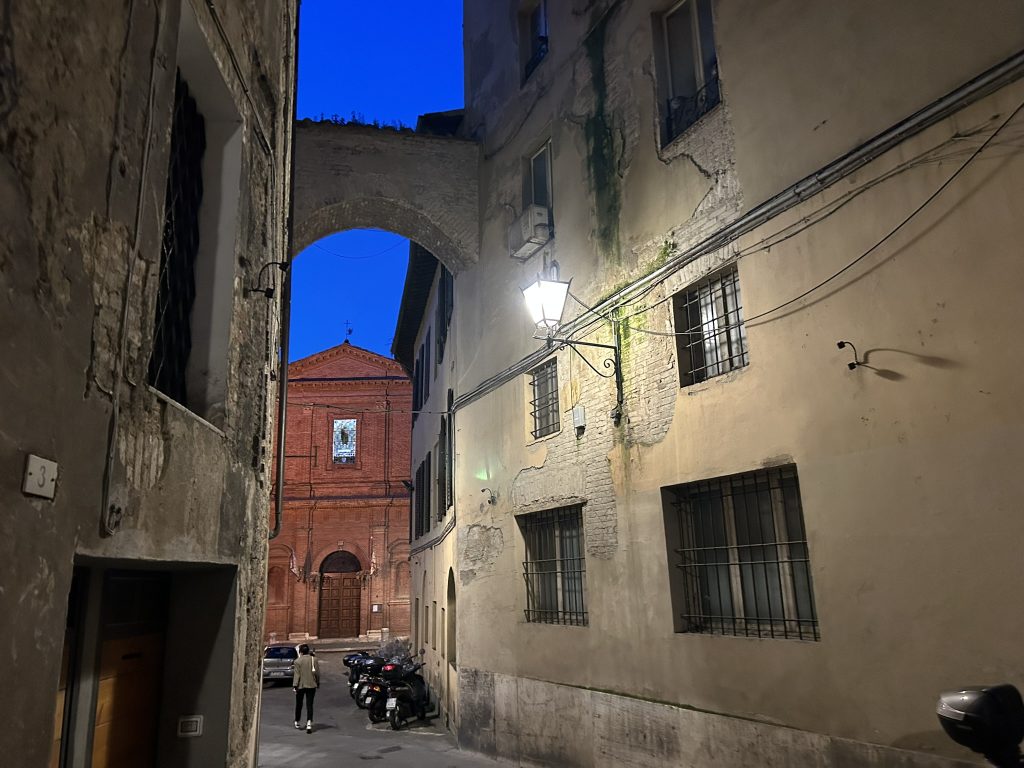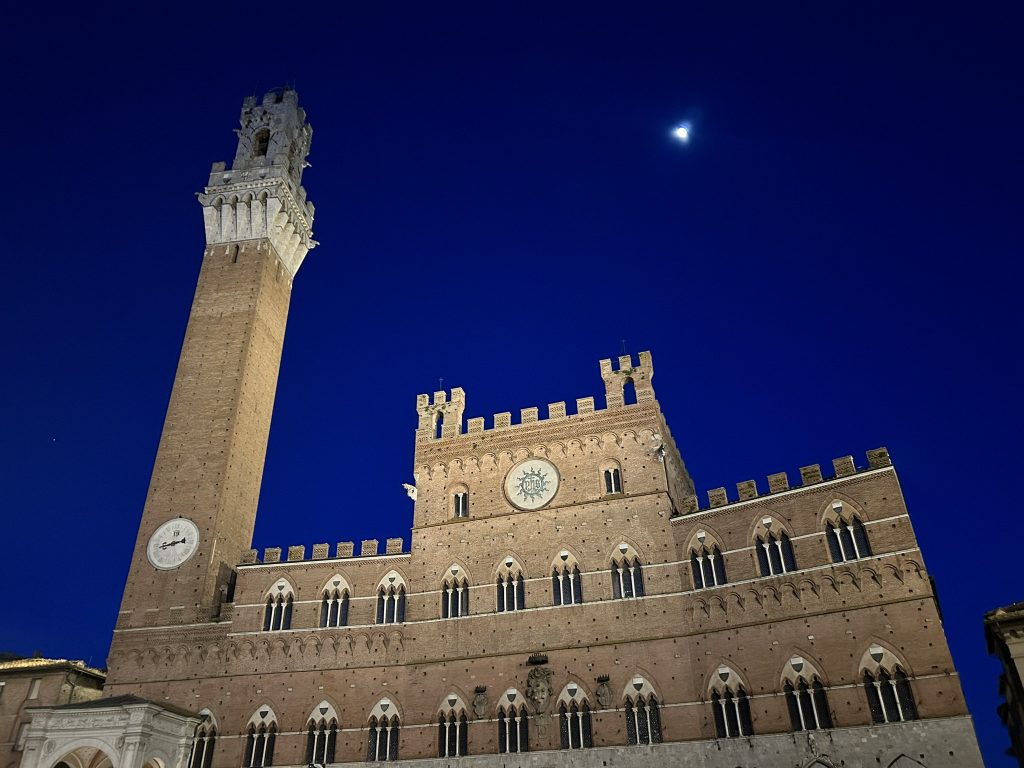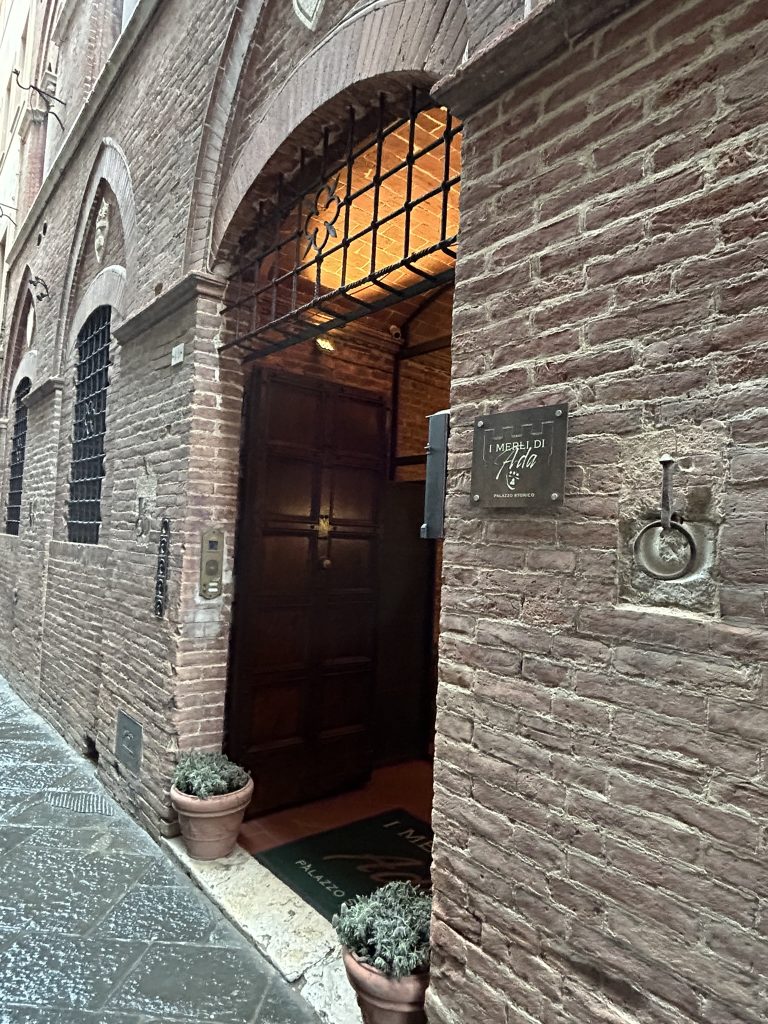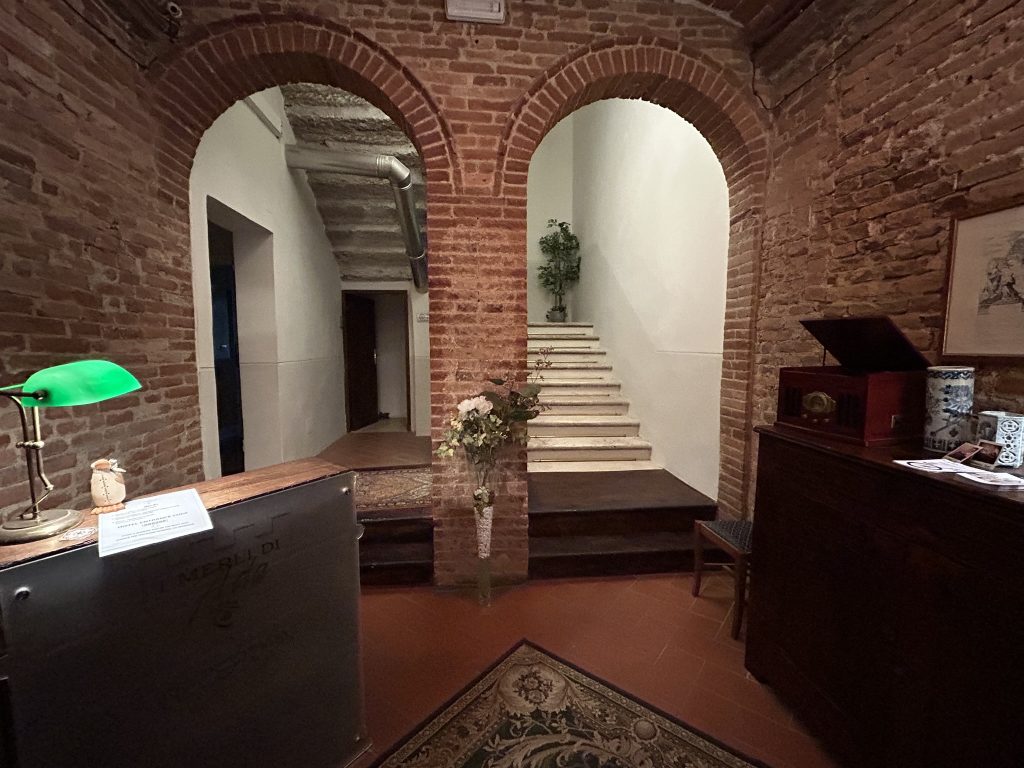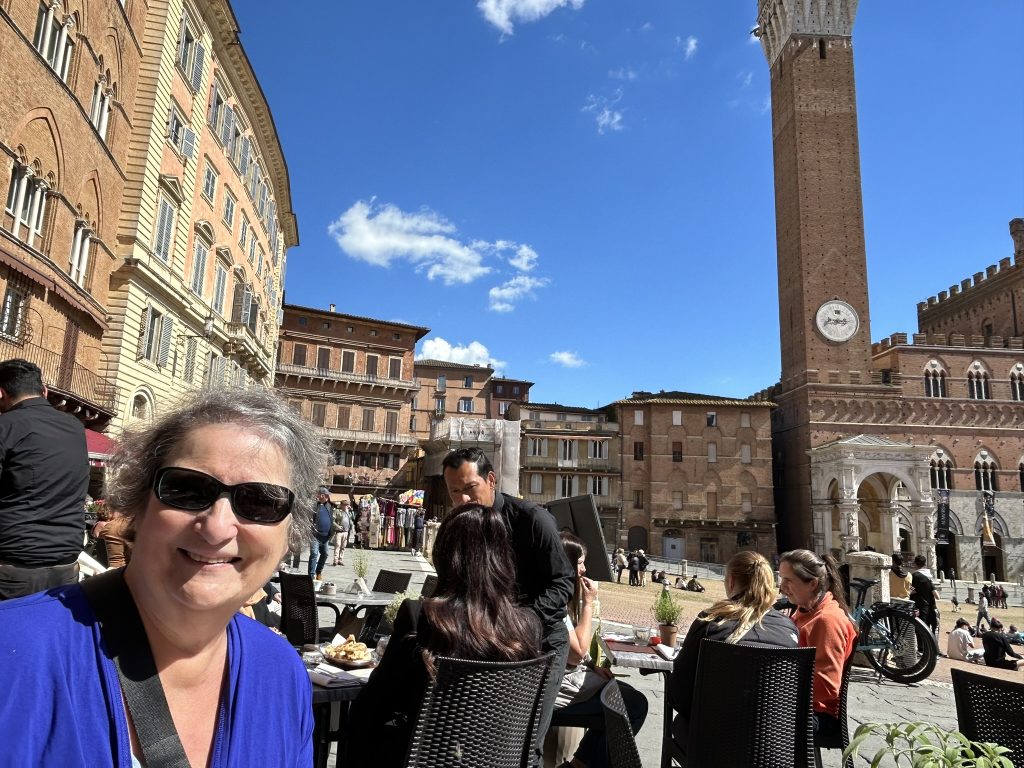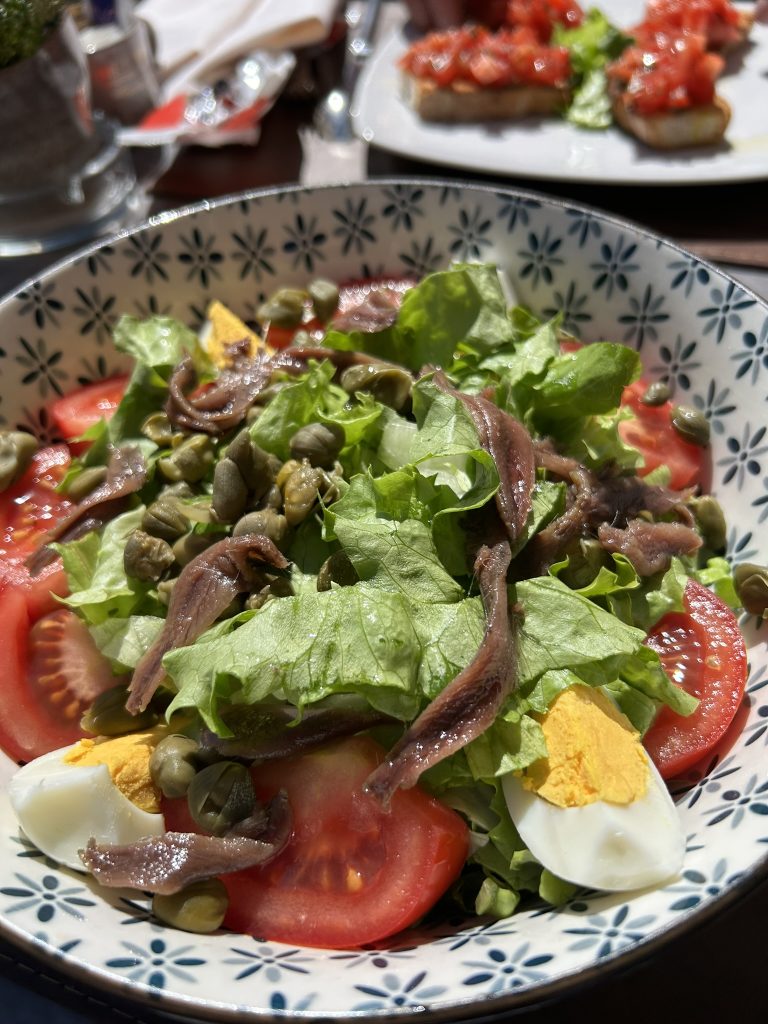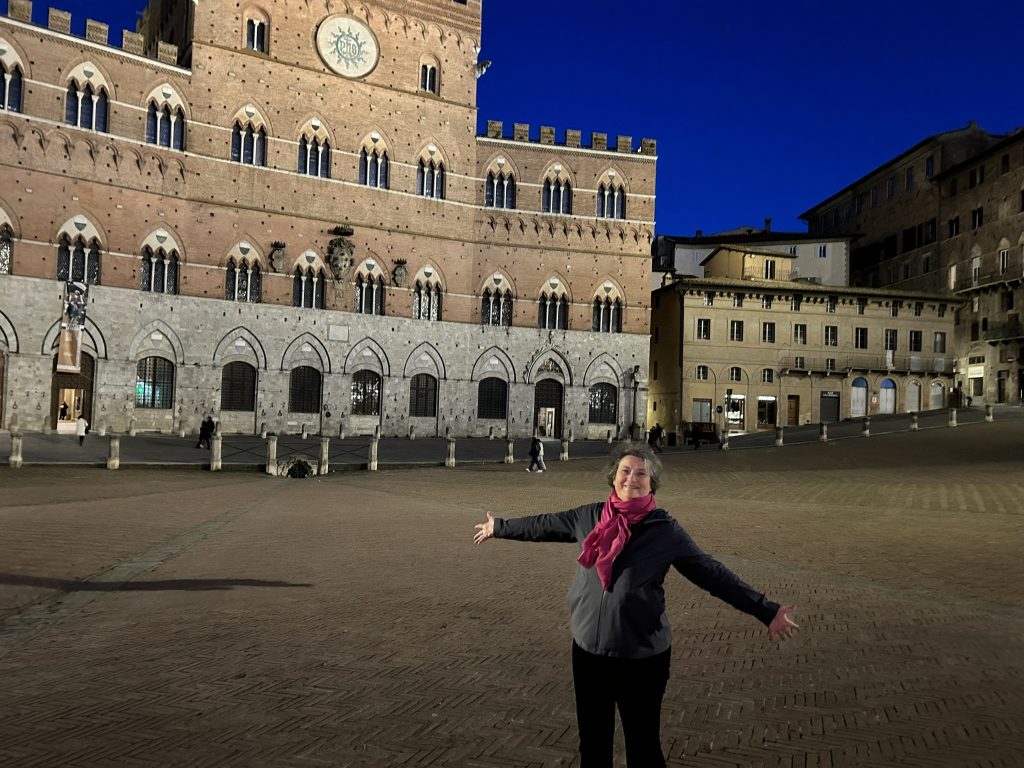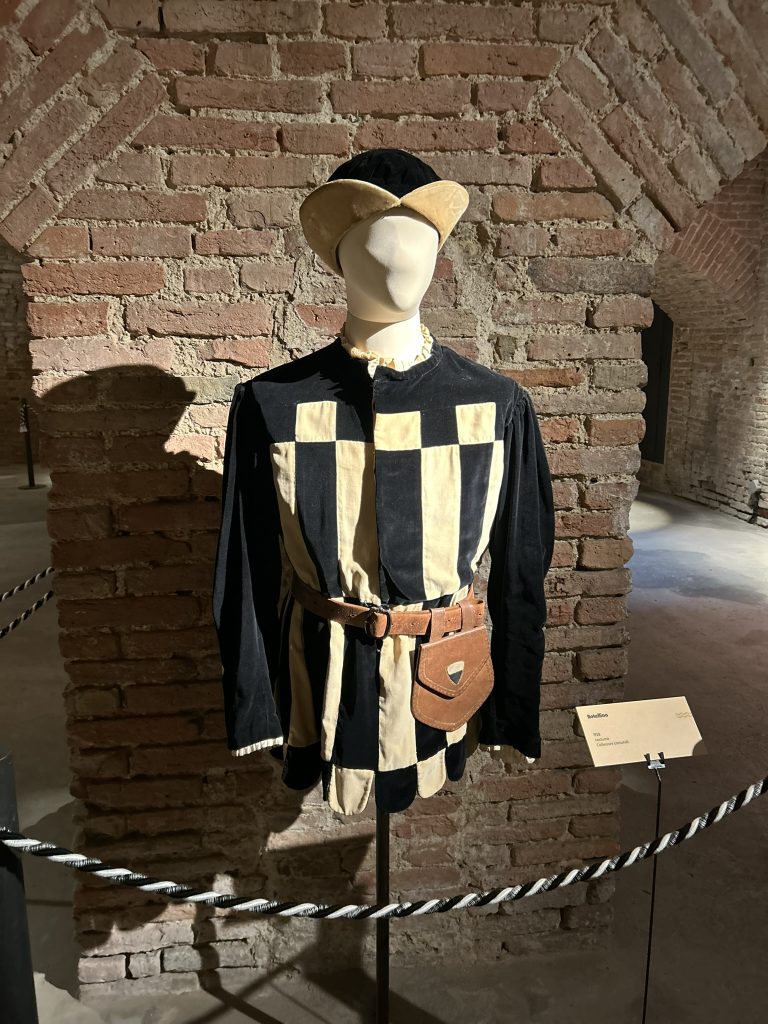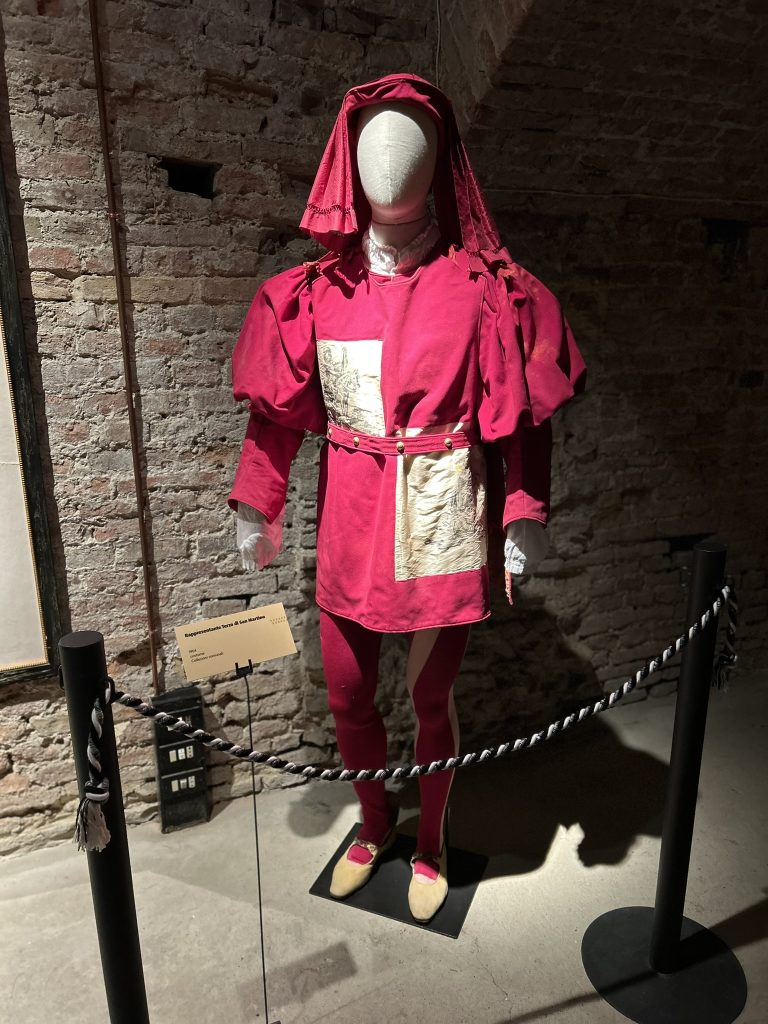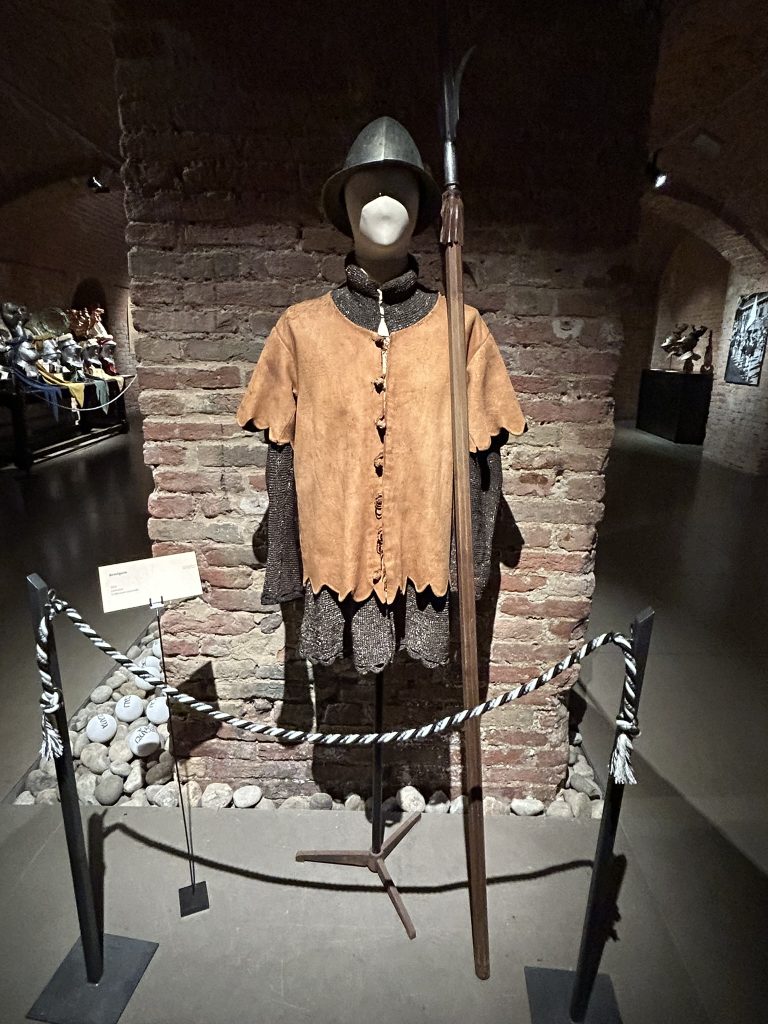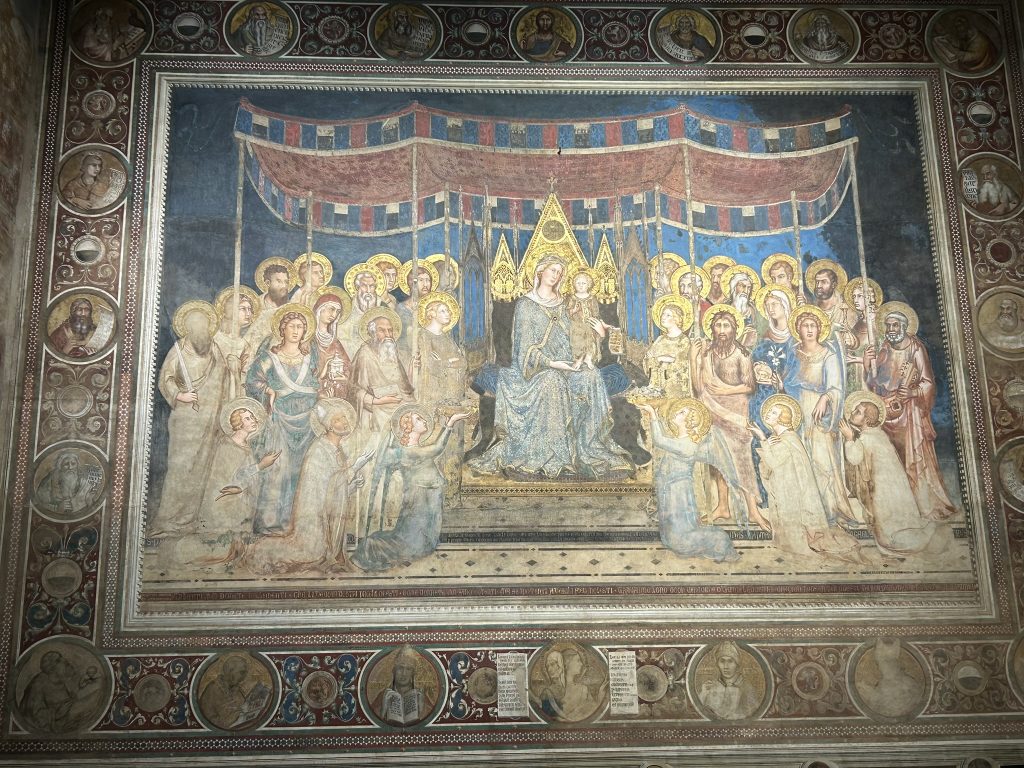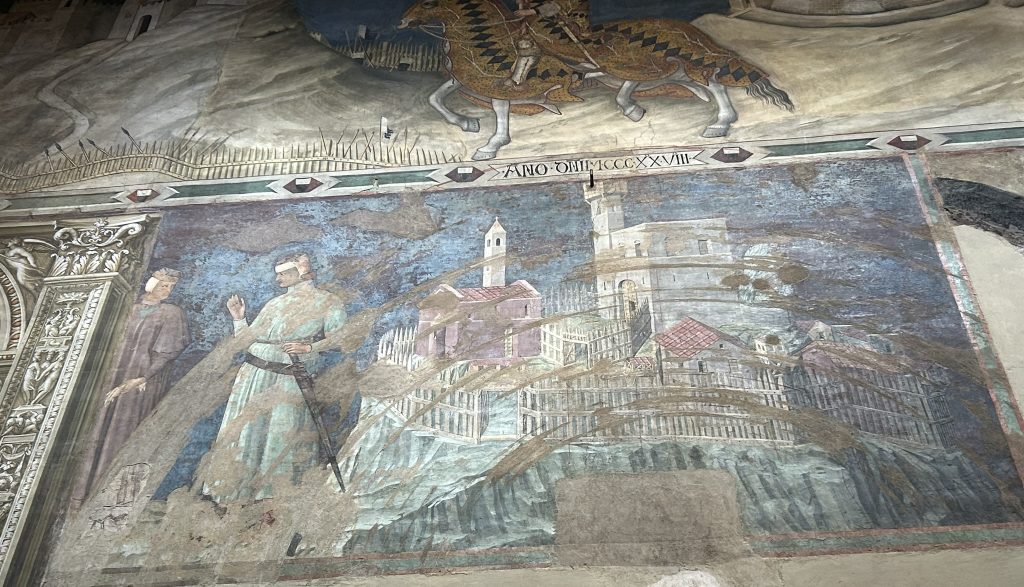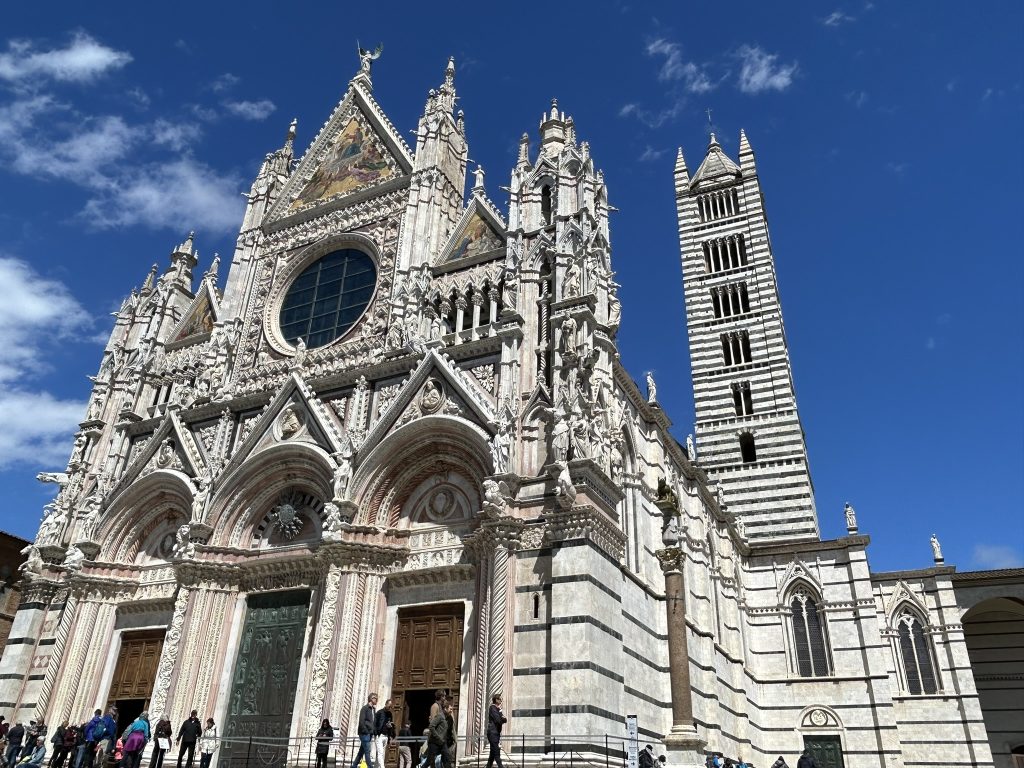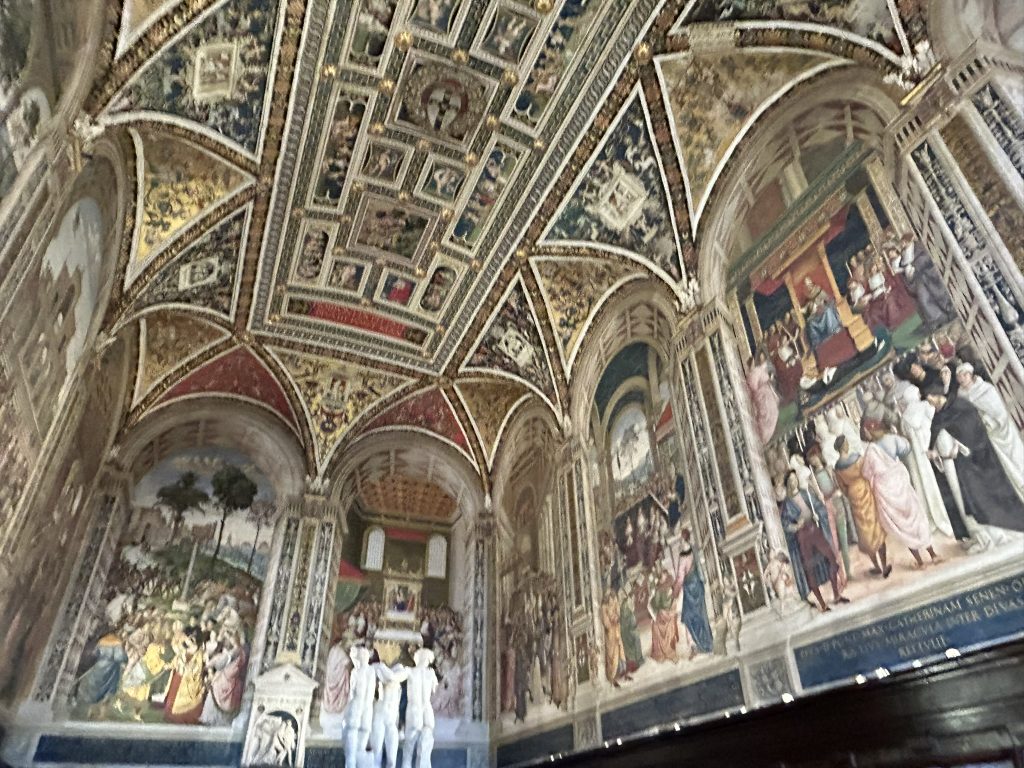Art Masterpieces in Tuscany You Don’t Want to Miss
Art masterpieces in Tuscany are as thick on the ground as grapes at harvest time.
When you visit Tuscany, you’ll enjoy la dolce vita, for sure, but in between sips of some of the world’s best wine, prepare to have your breath taken away by some of the world’s most cherished art.
Let’s face it, Tuscany is the perfect storm for art lovers with its stunning scenery, amazing food, tons of history, and world-class art.
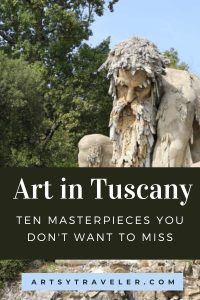
In this post, I present a selection of the art masterpieces to consider including in your Tuscany travels—whether this is your first trip or your tenth (or somewhere in between).
Top Masterpieces at a Glance
- Paintings by Martini, da Vinci, Botticelli & Artemisia at the Uffizi in Florence
- Michelangelo’s David at the Accademia in Florence
- Allegory of Good and Bad Government by Ambrogio Lorenzetti at the Palazzo Pubblico in Siena
- Snares of Love by Memmo di Fillipucio in the Palazzo Pubblico in San Gimignano
- Tarot Garden by Niki Saint Phalle in Grosseto
Overview
You’ll recognize some of the art included in this post, but others you may not be familiar with. I include both individual masterworks and art destinations in Tuscany.
A few of my suggested places are a fair way off the beaten path which means they won’t be crowded.
Organization
I’ve grouped the art by location:
- Florence
- Villa Demidoff (Outside Florence)
- San Gimignano
- Siena
- Il Giardino dei Tarocchi near Grosseto
The map of Tuscany below shows the general locations of the pieces covered in this post. See individual places for more detailed maps.
My list is in no way exhaustive. Tuscany is chock-a-block with magnificent art, and to list all of them requires books, not blog posts. This list is a starting point to help you create your own perfect Tuscany itinerary.
Art in Florence
For many travelers to Tuscany, Florence, birthplace of the Italian Renaissance, is their only destination, which is a shame.
This wonderful city is worth visiting, and you’ll see amazing art galore, but it’s also extremely crowded and lacks the charm of other, smaller Tuscan towns, such as Siena and Lucca.
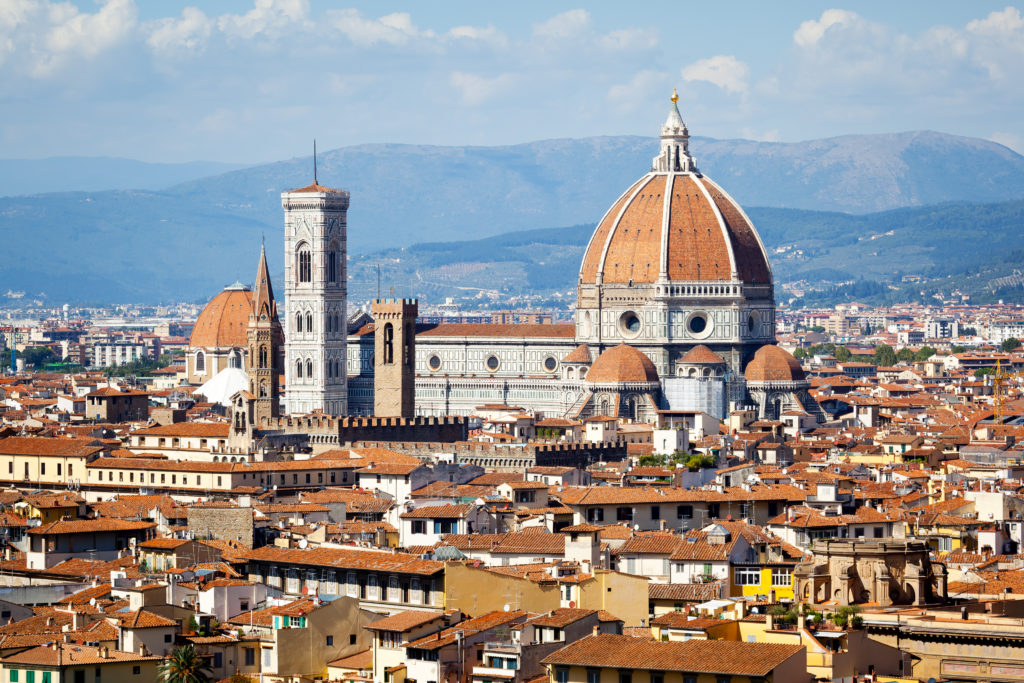
That said, if you haven’t been to Florence, then you should include it on your itinerary. Stay at least two nights and preferably three or four.
You won’t run out of important works of art to enjoy.
Map of Florence
Florence is a very walkable and compact city. You can easily stroll between each of the main sites.
Uffizi Gallery
The Uffizi Gallery in Florence is masterpiece-central in Tuscany and a must-see. But be warned! You really, really need to make reservations for the Uffizi.
Don’t just show up hoping to walk right in. That is, unless you enjoy standing in long lines that move an inch a minute while all the people with pre-purchased tickets whisk by. It’s disheartening.
Here’s a ticket option for the Uffizi that includes a small group guided tour.
My Favorite Pieces
Here, I’m including four of my fave masterpieces in the Uffizi. For more details, check out my post: Top Ten Favorites at the Uffizi Gallery in Spectacular Florence
The Annunciation with St. Margaret and St. Ansanus by Simone Martini and Lippo Memmi (1333)
That’s a mouthful. I just call it Martini’s Annunciation. The subject of the annunciation—when the angel Gabriel flutters to earth and informs the Virgin Mary that she is to be the mother of Christ—was popular in medieval and Renaissance art.
I love this version by Martini and Memmi because of the expression on Mary’s face. She’s like, what? Seriously?
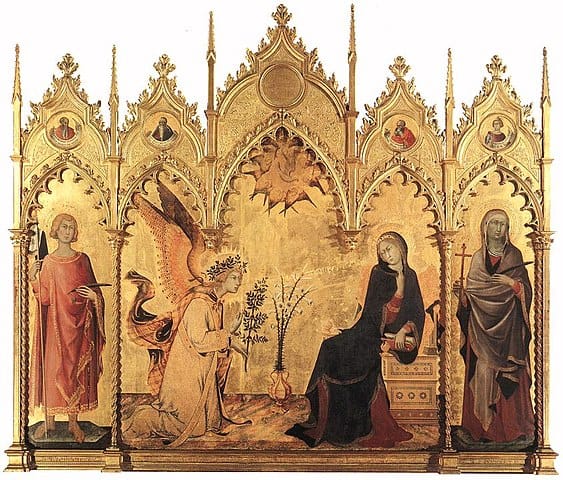
I’m also taken with the gold background and the flatness of the figures, a characteristic of 14th century art.
You’ll come across Martini’s Annunciation shortly after entering the Uffizi. A lot of people trudge right past it on a beeline for the more famous paintings by Botticelli, da Vinci, et al, but stop in the galleries of 14th-century paintings and spend some time.
You’ll be well rewarded and won’t be jostling for viewing room with thousands of selfie-stick wielders.
Annunciation by da Vinci
In later centuries, Annunciations, such as the famous one by Leonardo da Vinci below, look more realistic, but I like the energy and composition of the Martini one the best.
Since the art in the Uffizi is arranged chronologically, you’ll see da Vinci’s Annunciation after you view the Martini and Memmi version.
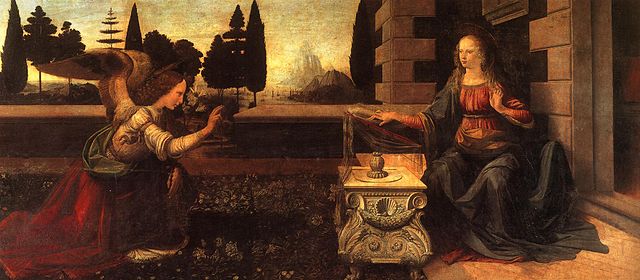
Birth of Venus by Botticelli (1485)
You’ve probably seen many reproductions of Botticelli’s Birth of Venus. The goddess of beauty and love arrives on the island of Cyprus, born of the sea spray and blown by the winds Zephyr and Aura (seen in the top left corner).
Venus perches on the edge of a giant scallop shell as goddesses are wont to do. She’s just so danged perfect.
I mean, look at that hair!
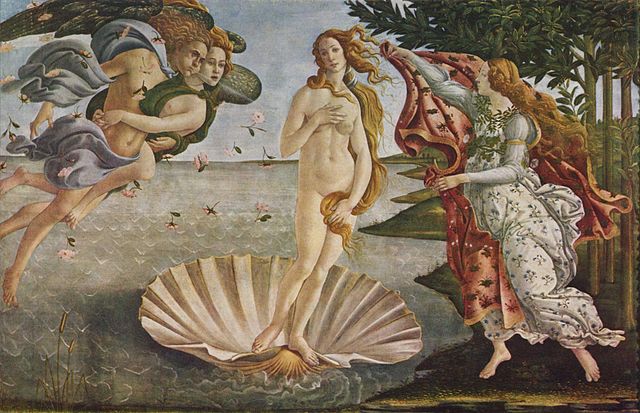
The room containing several paintings by Botticelli is generally really crowded. If possible, visit the Uffizi early or late in the day so you can swoon in relative solitude.
Other Works by Botticelli
In addition to Birth of Venus, you’ll also see Botticelli’s equally famous Primavera along with several more of his paintings exhibited in four consecutive rooms.
And once you’ve finished looking at the real things, you can buy them on just about every knick-knack known to humanity in the many gift shops lining the streets of the city.
Primavera mouse pad? Sure. Birth of Venus apron? Definitely.
Judith Beheading Holofernes (1620) by Artemisia Gentileschi
Hooray for Artemisia Gentileschi, one of the first recognized woman artists of the Baroque period. Several other women artists from the period (and earlier) have gained notice in recent years, but Artemisia is the one most people think of when asked to name a woman artist from back in the day.
She was also the first woman to be admitted to the Academy of Art and Design in Florence, which was no small feat at the time.
Artemisia’s painting of Judith beheading poor old Holofernes (hey, he deserved it) is an amazing work. Look at Judith’s muscles as she holds down Holofernes.
This subject was a favorite of the period, and male artists usually depicted Judith as a bit of an ethereal wimp. Not Artemisia. She doesn’t shy away from showing the sheer brute strength that Judith would need to saw the head off a man.
She and her maid are working hard!
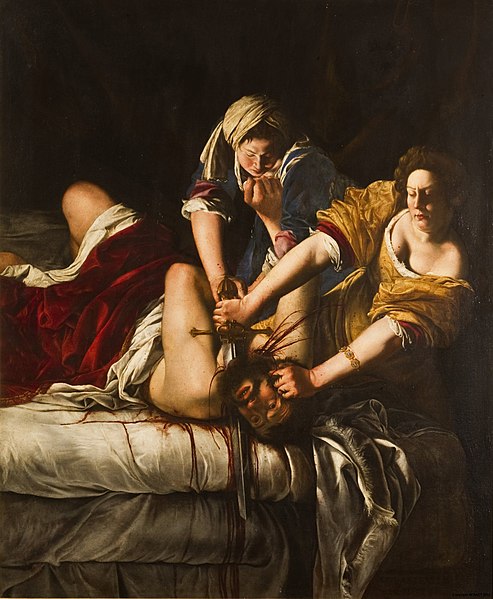
Two Amazing Davids
That’s Davids plural because in Florence you must see the super-famous David by Michelangelo as well as the not-quite-so-famous-but still-awesome David by Donatello.
Both Davids represent the Renaissance in different ways.
Michelangelo’s David
The most famous statue of David is the one created by Michelangelo and displayed in the Accademia, another place for which you must secure reservations or risk a long line-up.
David stands with magnificent insouciance at the end of a long hallway lined with other works by Michelangelo.
Some of these works are unfinished—human figures emerging half-formed from marble blocks. I like these works almost more than the finished sculptures because they show the process of turning blocks into humans.
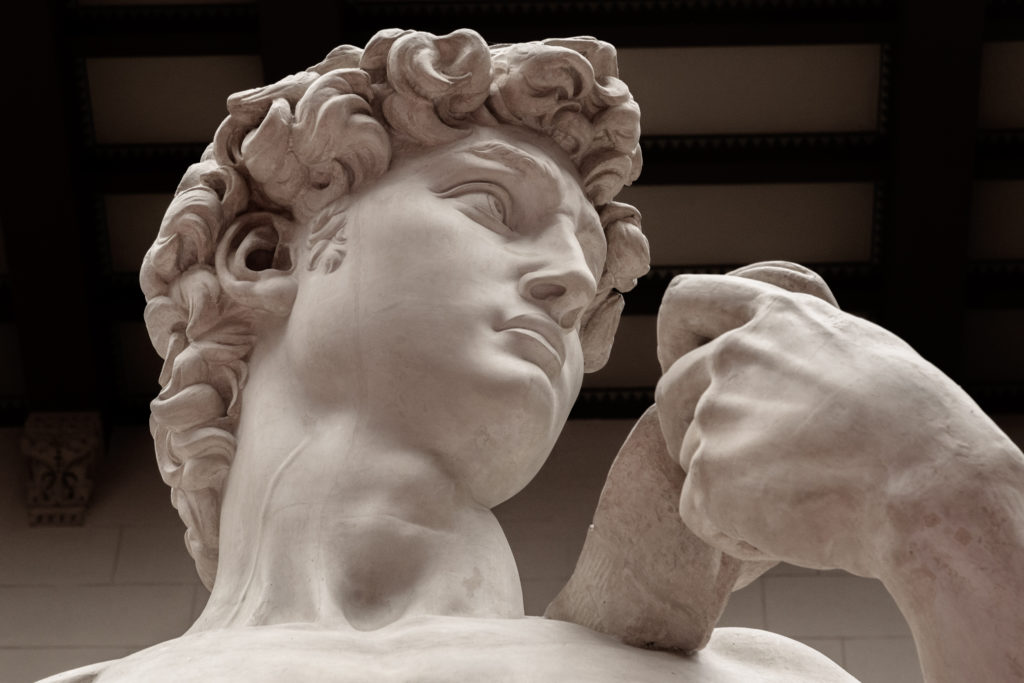
When you finally work your way up to the front of the line and stand in front of David in all his naked glory, you’ll know what all the fuss is about.
He is magnificent.
Although sculpted from marble, the muscles and sinews appear to pulse with life. Every inch of him is perfection—a testament to the beauty and power of the human form.
I remember wandering around the back of him and staring up at a pair of buttocks that any gym rat would kill for. While thinking unholy thoughts, I was joined by a bevy of nuns. They weren’t speaking English, so I couldn’t understand what they were saying, but they were definitely smiling—and, truth be told, giggling.
Well, no wonder.
Here’s an topin for purchasing your timed-entry ticket to see Michelangelo’s David at the Accademia.
Donatello’s David
Donatello’s David at the marvelous Bargello Museum (reservations also recommended) might as well be a different species.
Where Michelangelo’s marble-carved David is tall, strong, and, let’s face it, hunky, Donatello’s bronze David is relaxed, laid-back, and kind of pretty.
He wears a hat festooned with flowers and leans on his sword, one hand on his hip. He’s like, come on Goliath, I dare ya to come at me.
Donatello’s David is famous for being the first free-standing bronze sculpture since antiquity.
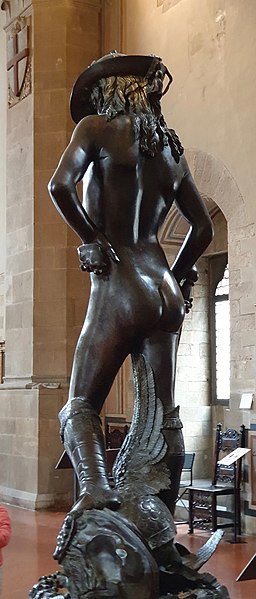
The Bargello Museum—a former prison—includes many more wonderful artworks to enjoy, including sculptures by Benvenuto Cellini and works by Michelangelo, including his statue of Bacchus.
Fra Angelico at the Museo di San Marco
The Museo di San Marco is a little off the beaten path which means it’s not crowded—a relief in Florence.
The museum is housed in the former Dominican Monastery (called the Convento di San Marco) where Fra’ Angelico lived as a monk from 1436 to 1455 and painted his stunning frescoes.
Wander down the long corridor flanked on either side by the monk’s cells and stop at each cell to view Fra’ Angelico’s frescoes. I love the way he painted angel wings—very art deco-looking and colorful.
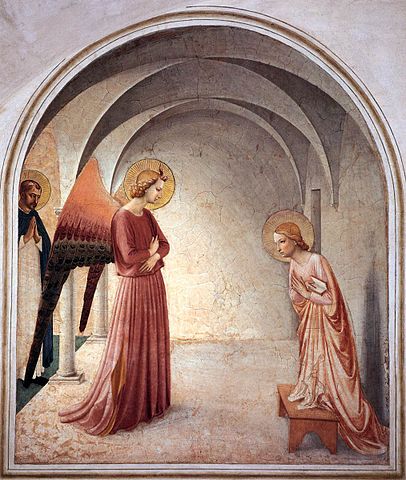
The museum contains numerous frescoes by Fra’ Angelico, including the magnificent fresco in the Chapter House and his famous version of the Annunciation located at the top of the stairs leading to the cells. As I mentioned, I’m partial to Annunciations, and Fra’ Angelico’s version is one of the best.
Savonarola: A Burning Tale
You can also peek into the cell once occupied by the infamous Savonarola, who preached vociferously against greed and luxury and denounced clerical corruption, despotic rule, and the exploitation of the poor.
Unfortunately for Savonarola, he went too far with his well-intended but over-the-top spectacles, including his Bonfires of the Vanities, and ended up hanged and burned in 1498.
Oops.
Brancacci Chapel
The attraction at the lovely Brancacci Chapel across the Arno in a quieter and less touristy area of Florence are the gorgeous frescoes by Masaccio and Masolino. The Chapel is located away from the tourist hordes and requires a pleasantly long walk through a Florentine neighborhood in which people actually live.
I stopped for lunch at a café with three tiny tables perched on the edge of the sidewalk and enjoyed being the only tourist in the vicinity.
I was entertained watching a group of well-heeled, impeccably dressed Florentine businessmen lunching nearby. Each man looked like he’d stepped straight out of one of the Renaissance frescoes in the Brancacci Chapel.
Substitute business suits for tights and cloaks and not much has changed.
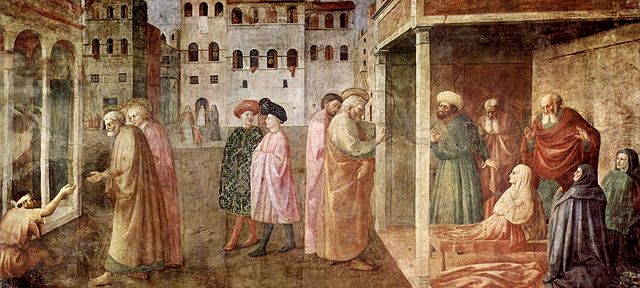
Admission to the Brancacci Chapel is limited so purchase your tickets in advance. Tickets from this site let you skip the line, and provide a video guide.
You’ll be struck by the vivid colors in the Masaccio and Masolino frescoes commissioned in 1424. The Expulsion of Adam and Eve from Paradise is especially evocative.
Other Suggestions for Florence
Palazzo Davanzati
Tour this medieval palazzo to discover what life was like for wealthy people in the early Renaissance. I had a great visit even though the guided tour was in Italian.
It didn’t matter; I could still get a good idea of how people lived.
A highlight is the painted walls in many of the rooms. When I was writing my first novel, The Towers of Tuscany, I often envisioned the layout of the rooms in the Palazzo Davanzati as I wrote.
Here’s an option for a private guided tour of the Palazzo Davanzati, which would be well worth your time if you are interested in how rich people lived seven hundred-odd years ago.
Boboli Gardens
Treat yourself to a refreshing walk through these beautiful gardens with spectacular views over Florence and the Tuscan countryside.
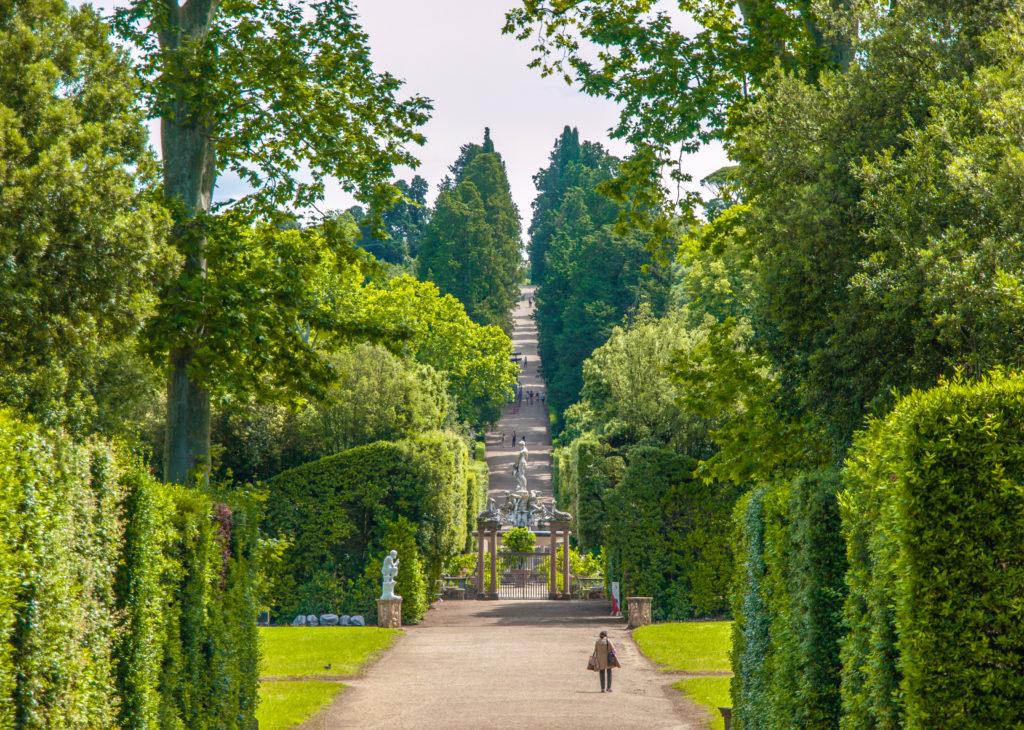
When it’s hot (as it often is in the summer), do yourself a favor and escape the crush of tour groups in the center of the city and take a taxi across the Arno to the Boboli Gardens.
Florence overflows with interesting museums and churches and artwork to keep you busy for days.
And don’t forget shopping! Florence is the place in Tuscany to buy leather goods (although they can be cheaper in Siena but without as much choice).
Tours in Florence
Here are some Get Your Guide tour options in Florence.
Villa Demidoff – Outside Florence
In the gardens of the Villa Demidoff in Pratolino, about ten kilometers north of Florence in the beautiful Tuscan countryside, you can visit the aptly named Colossus. A seated figure that appears to be half rock, half man broods on an outcropping above a pond.
I adore this statue!
It’s just so darned unexpected. We visited a hot summer’s day and were captivated. The 35-foot tall Colossus is a colossal (ha!) statue created in the late 1500s by the Italian sculptor Giambologna.
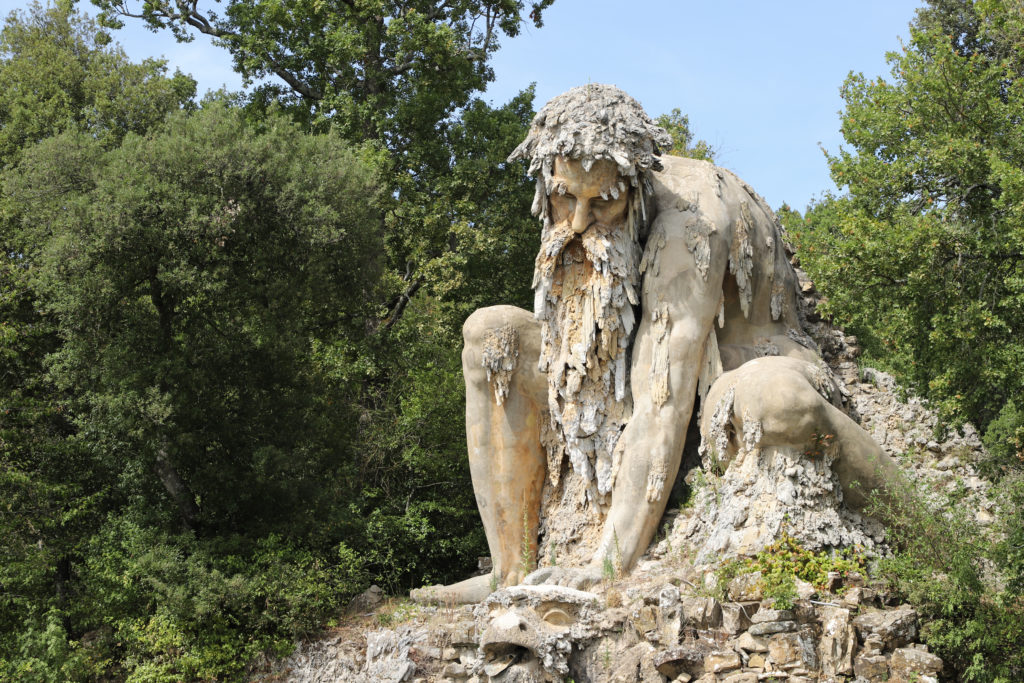
Despite his size, Colossus looks quite melancholy, as if he wished he could rise from the rocks keeping him captive and clomp off to a quiet grove where no one would take selfies with him.
Inside Colossus are various chambers.
Other Sites in the Gardens
The gardens are home to several more interesting features, including the hexagonal Chapel of Buontalenti, a fantastic dragon sculpture behind Colossus, the Cupid’s grotto, and the fountain of Jupiter.
The park is open every weekend from April to October, and admission is free. Before you go, check opening times on the park website.
For a good day out, rent a car and drive north to enjoy the park and the surrounding area, then have dinner in Fiesole while watching the sun set over Florence in the valley below.
You can also take a bus to Pratolino: catch the ATAF bus #25A from Piazza San Marco – the “A” is important. SITA also offers service to Pratolino from the main stop in SMN Piazza Stazione and CAP, with stops on Via Nazionale in Florence.
Art Masterpieces in Siena
Hands down, Siena is my favorite city in Tuscany. I never tire of wandering its narrow streets and then emerging, dazzled by the sun, into the Piazza del Campo—or Il Campo.
Called the most beautiful living room in Italy, Il Campo takes my breath away every time.
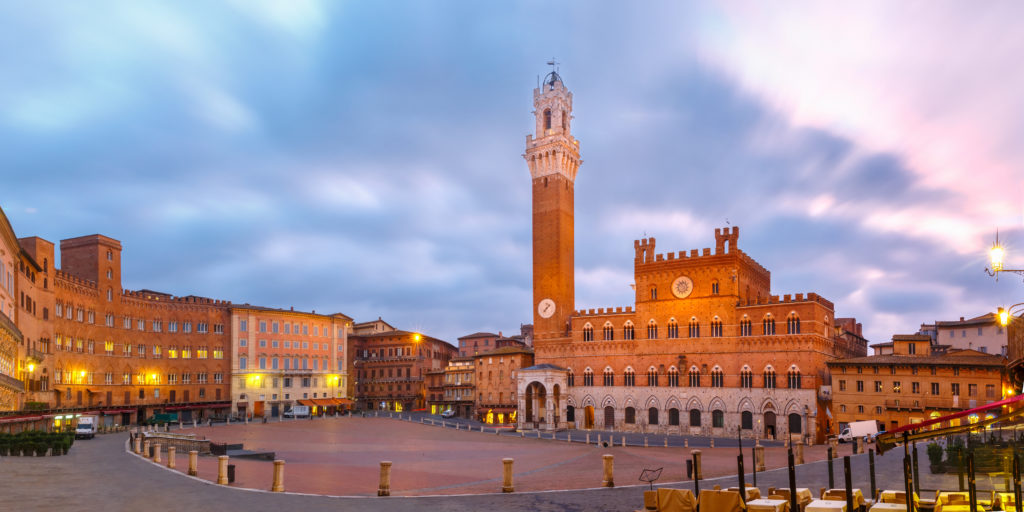
The first time I went to Siena by myself, I was so overcome with emotion by finally making it to the Campo, where several important scenes in my novel The Towers of Tuscany take place, that I dropped to my knees, lay down on my back, and took a selfie.
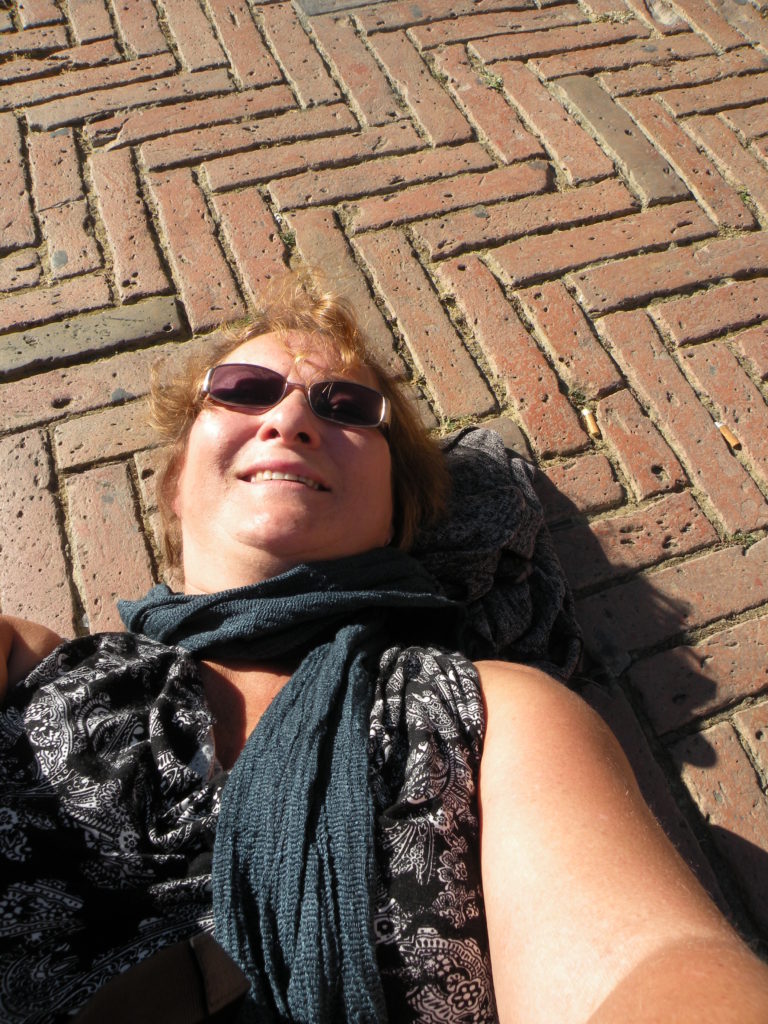
Fortunately, no one batted an eye. Several people were doing the same, their backs warmed by bricks laid in the 1330s, not long before the Black Death carried away half of the medieval city’s population.
Siena is very compact, which is a good thing because the only way to get around is by walking. Fortunately, you can stroll between the two major sites–the cathedral and the palazzo publicco in just a few minutes. Use the map below to orient yourself.
Map thanks to Wanderlog, a vacation planner app on iOS and Android
Piccolomini Library in the Cathedral
I single out the Piccolomini Library as one of two must-see masterpieces in Siena, but really, the entire cathedral (also known as the Duomo) is worth a half-day of your touring time.
You can skip the line by buying your tickets ahead. Your ticket is also good for the baptistery, crypt, and the Opera museum—all must-sees.
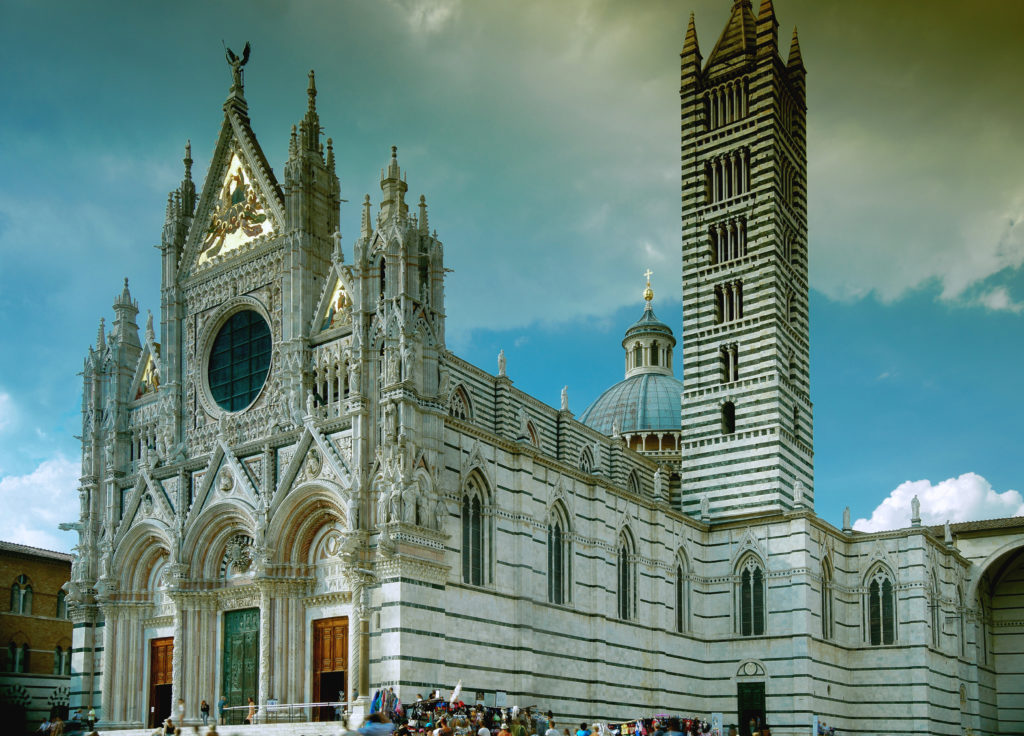
Cathedral of Siena
A superb example of the Gothic Roman style in Italy, the Cathedral (the Duomo) is full of treasures. Marvel at the Duomo’s indoor and outdoor alternating stripes in white and greenish-black marble.
Black and white are the symbolic colors of Siena.
Unlike the sparse interiors of some cathedrals in Italy, the interior of the Duomo is fantastically decorated.
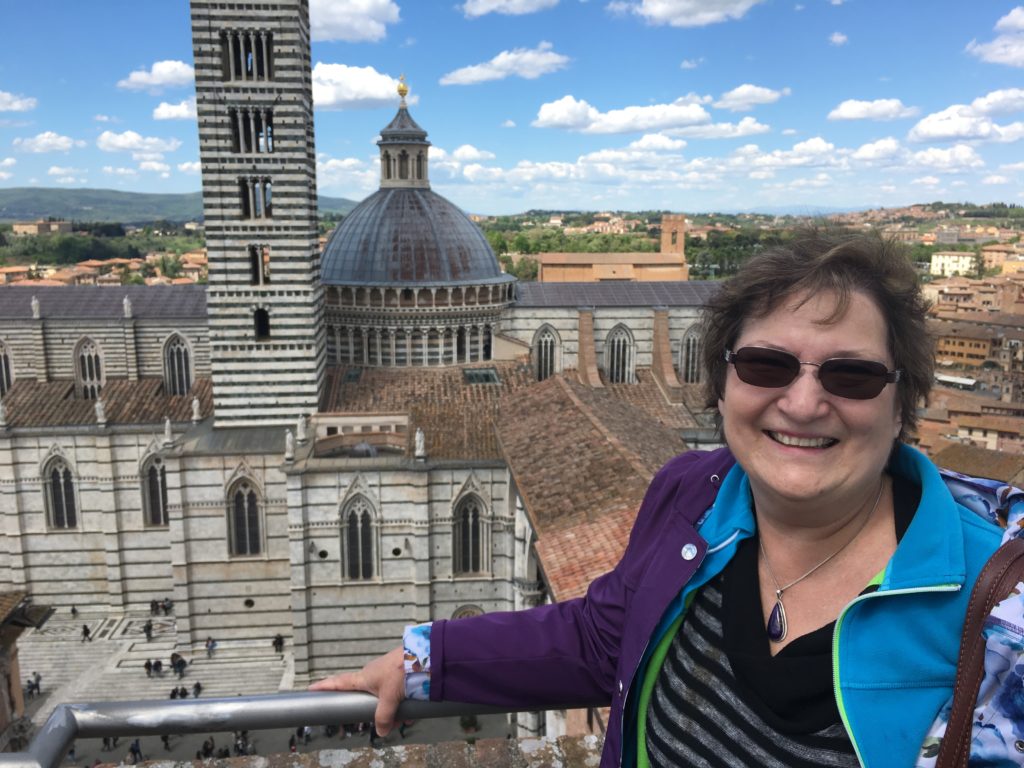
Look for the statue of St. John the Baptist by Donatello to the right after the Piccolomini Library, the rose window by Duccio di Buoninsegna, and the marble pulpit by Nicola Pisano, along with many gorgeous frescoes.
One of the most beautiful parts of the cathedral is its floor. You can spend hours wandering around the huge mosaics to “read” the stories.
The fifty-six etched and inlaid marble panels were designed between 1369 and 1547 by forty leading artists.
Piccolomini Library
And then there’s the Piccolomini Library itself. This place was a surprise to me. I hadn’t heard of it and so was in for a treat when I entered and had the breath knocked out of me (figuratively speaking).
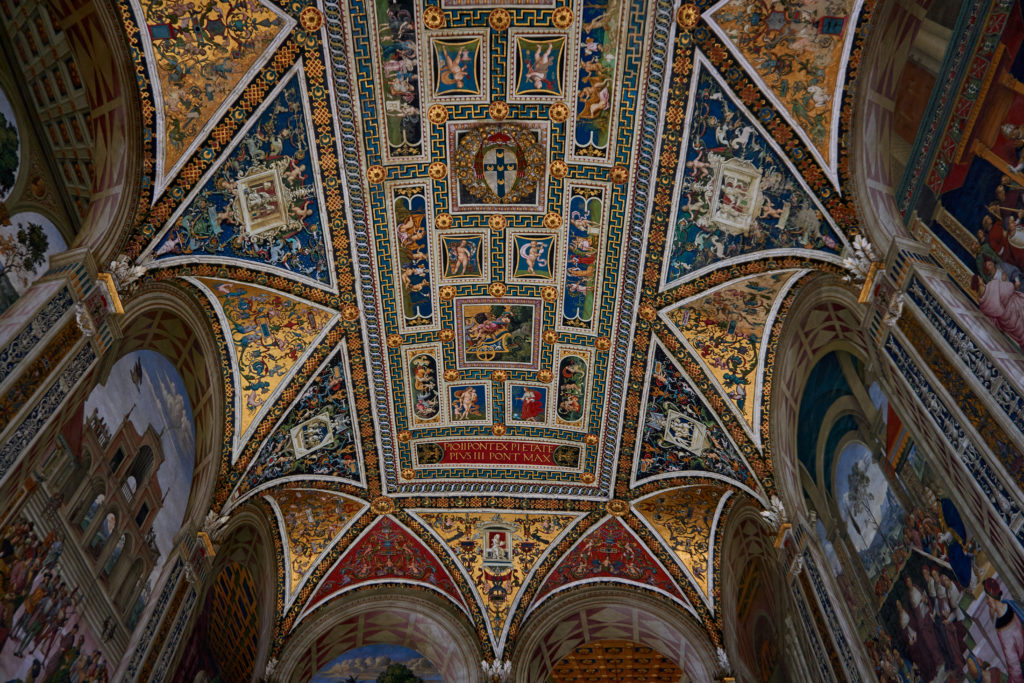
The library is dedicated to Enea Silvio Piccolomini, an immensely powerful man in the mid 1400s who was elected Pope Pius II in 1458.
The big draw in the library are the frescoes by Pinturicchio.
Each of the ten scenes representing important stages in the life of Pope Pius II is exquisitely painted. The colors, perspective, figures, and backgrounds are incredibly detailed and evocative of their time. I was mesmerized.
Maestà Altarpiece by Duccio di Buoninsegna
While you’re hanging around the Duomo, don’t miss the Opera museum (it’s part of your ticket) so you can admire the Maestà altarpiece by Duccio di Buoninsegna that was commissioned by the cathedral in 1311.
I like the altarpiece because it’s gorgeous and because it makes a cameo appearance in my novel, The Towers of Tuscany.
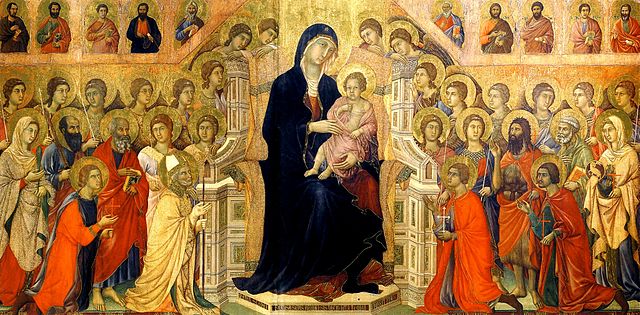
Palazzo Pubblico
You can’t miss the Palazzo Pubblico in Il Campo. The much-photographed red brick palazzo that looks like a child’s drawing of a castle has become one of the most recognized views in Siena. I’ve taken my share of photos of it and the adjacent Torre Mangia.
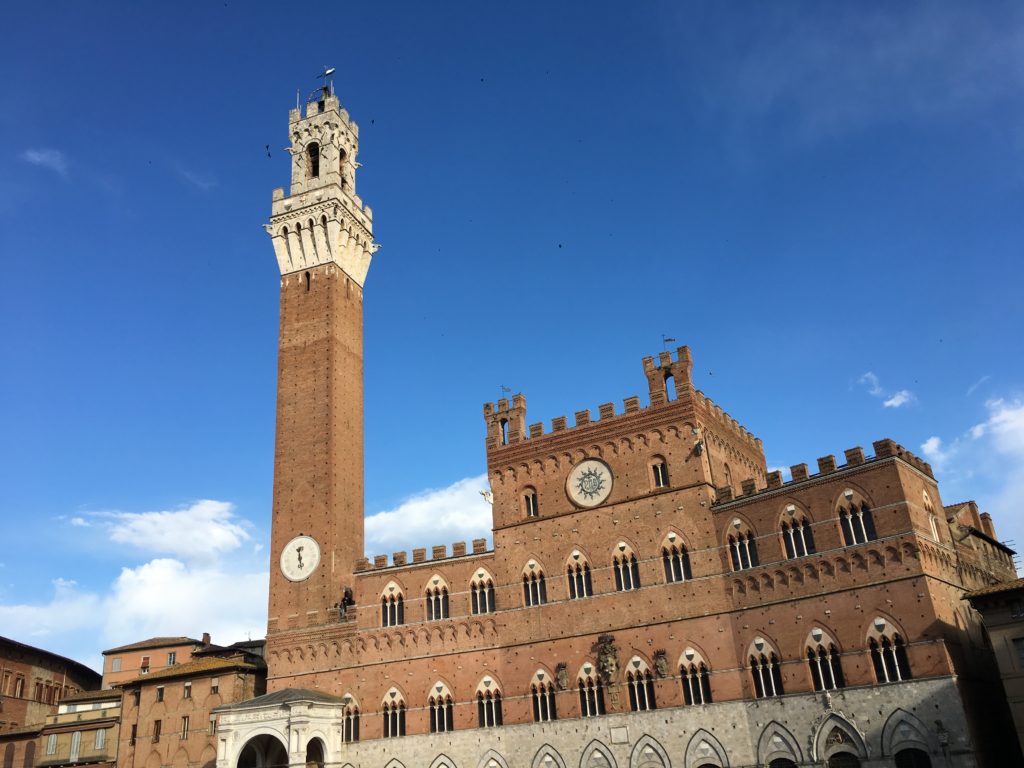
The Palazzo Pubblico dates from the early 14th century and played an important role in ensuring Siena enjoyed relative peace from the late 13th century to 1355.
While you tour the Museo Civico, read about the “Government of the Nine”, the system of government that consisted of nine representatives of the people elected from the middle class and not from the noble families. This relatively democratic form of government was responsible for commissioning many civic works of art in the first half of the 14th century.
Museo Civico – Torre Mangia
The Museo Civico is located on the first floor of the Palazzo Pubblico, which still functions as Siena’s city hall.
Enter the courtyard called the Cortile del Podestà to access the Museo Civico and, if you’re feeling energetic, climb the 400 steps to the top of the Torre Mangia.
The view is spectacular, but the narrow staircase is claustrophobic and, in the summer, very hot. I’ve climbed the Torre Mangia once and do not feel the need to do so again.
Frescoes in Sala del Mappamondo
There are plenty of interesting things to look at in the Museo Civico, but the big draw are the frescoes by Simone Martini and Ambrogio Lorenzetti.
The two large frescoes by Simone Martini are located in the massive hall called Sala del Mappamondo. You can’t miss it. To your left as you enter the hall is the Maestà by Simone Martini. The gorgeous fresco shows the Madonna seated on a throne with the Child and surrounded by angels and saints. Note all the haloes!
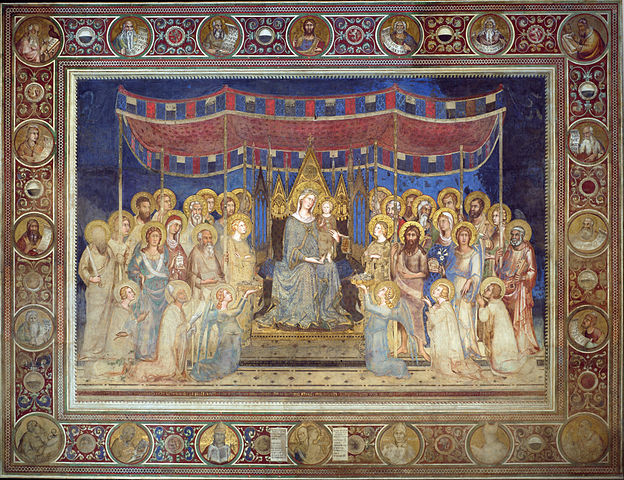
Turn around and at the other end of the hall you’ll see the fresco of Guidoriccio da Fogliano, a general on his horse with the castles he just conquered in the distance. You’ll see reproductions of this piece in a lot of souvenir shops.
I love how Guidoriccio and his horse are wearing the same ensemble. Very stylish.
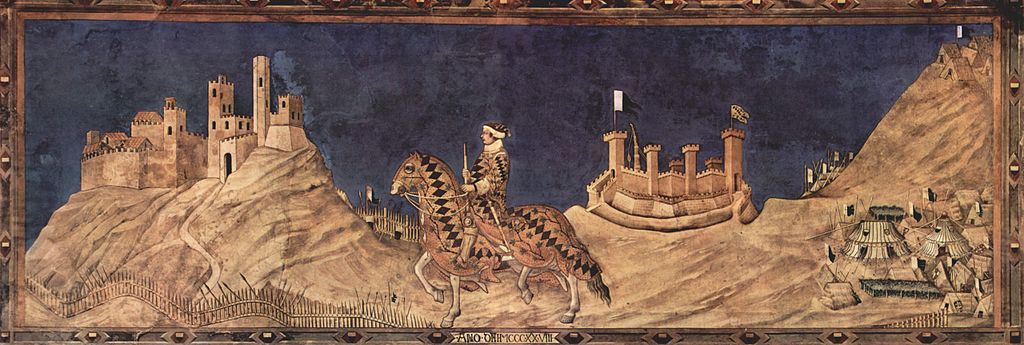
Frescoes in the Sala dei Nove
Now walk into the Sala dei Nove—the Hall of the Nine—to see Siena’s most famous masterpiece: the fresco cycle called Allegory of Good and Bad Government by Ambrogio Lorenzetti.
You’ll get a sore neck looking up at the three wall-size frescoes, famous because they’re interesting to look at and because they depict secular subjects instead of religious ones—a rarity at the time (1340s).
I love the girls dancing in the Good Government fresco (pictured below). Take a seat and enjoy gazing up at the frescoes. Whenever I’ve been to the Sala dei Novel, I’ve been pretty much alone.
Although famous, these frescoes aren’t that famous which means you’re likely able to enjoy them crowd-free.
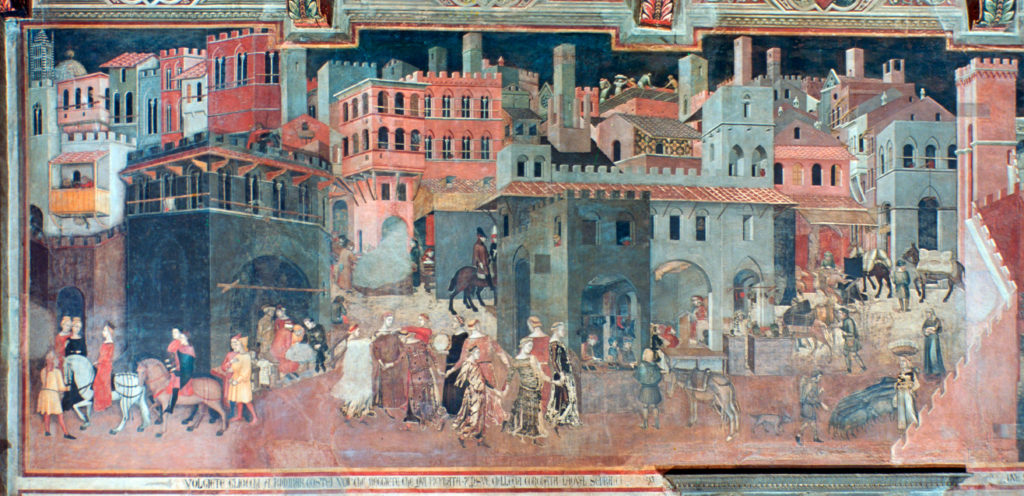
Other Suggestions for Siena
Siena is worth at least two days of your time, although people often squeeze it in as an afternoon trip from Florence. Please don’t do that!
Compared to overcrowded Florence, this wonderful small city is a medieval treat. Make room in your itinerary for a proper visit so you have ample time to get to know this delightful city. You won’t find many big-ticket sites, but that’s not the point of Siena.
Here are some options for touring Siena and other nearby locations:
And when you’re not enjoying the art, spend time wandering the back streets of Siena.
Enjoy a cappuccino in one of the cafés overlooking the Campo and buy yourself a leather purse or two. They are far more reasonably priced here than in Florence. My collection is growing!
Art Masterpieces in San Gimignano
San Gimignano is overrun with tourists and crammed with tacky tourist shops. And yet I love it!
Every time we visit Tuscany, we stay for a few days in the vicinity of San Gimignano. We usually spend the day either touring around the countryside or staying put in our hotel to write (me) and draw (Gregg).
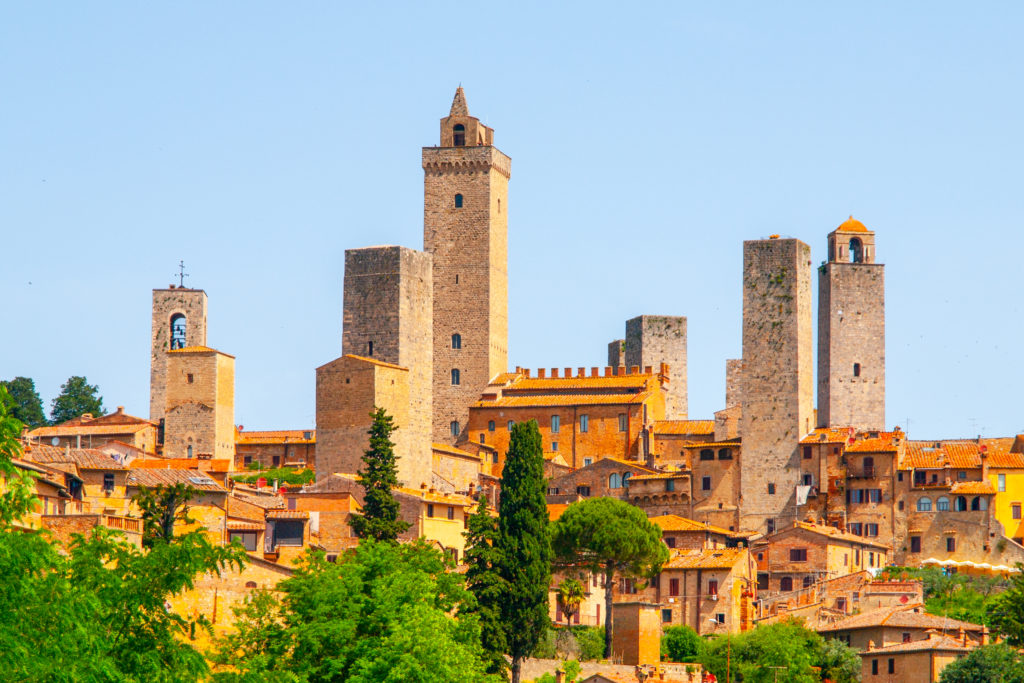
Then, towards the end of the afternoon when the parking lots surrounding Gimignano start to empty, we venture forth.
By 4 or 5 pm, the tour busses have lumbered off, the merchants are standing outside their shops taking a much-needed break, the hot streets are shaded by the towers, and the whole town seems to exhale with relief.
Stroll virtually deserted side streets in search of art and food (in that order). For a small hill town, San Gimignano punches above its weight in excellent restaurants.
You’ll see a lot of art in San Gimignano, but don’t miss these two sites which fortunately are close to each other:
Palazzo Comunale in the Civic Museum
Located next to the Duomo, the Civic Museum also includes the Torre Grossa—the tallest of San Gimignano’s seventeen towers and the only one you can climb.
I have climbed it, and it’s worth doing, but the real draw are the frescoes in the chamber of the Podestà in the Palazzo Comunale (which also has other good art to enjoy).
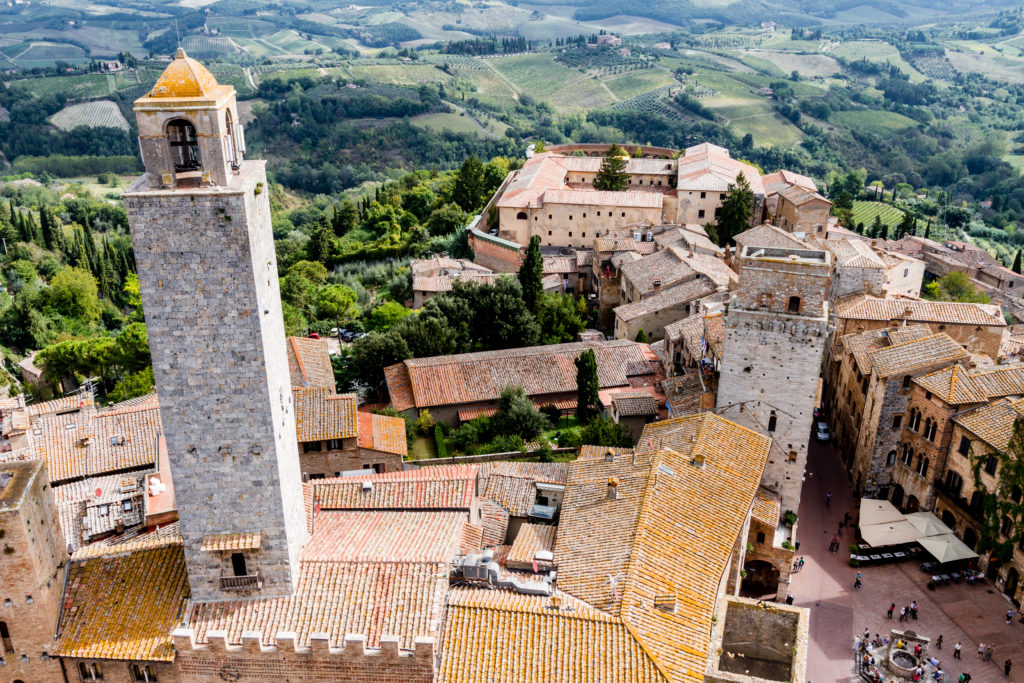
Snares of Love
The series of frescoes is called the “snares of love”, painted by Memmo di Filippucio between 1303 to 1310.
Scenes show both profane love and scenes from marriage. I love the secular nature of these frescoes, especially the one where the young married couple share a bathtub.
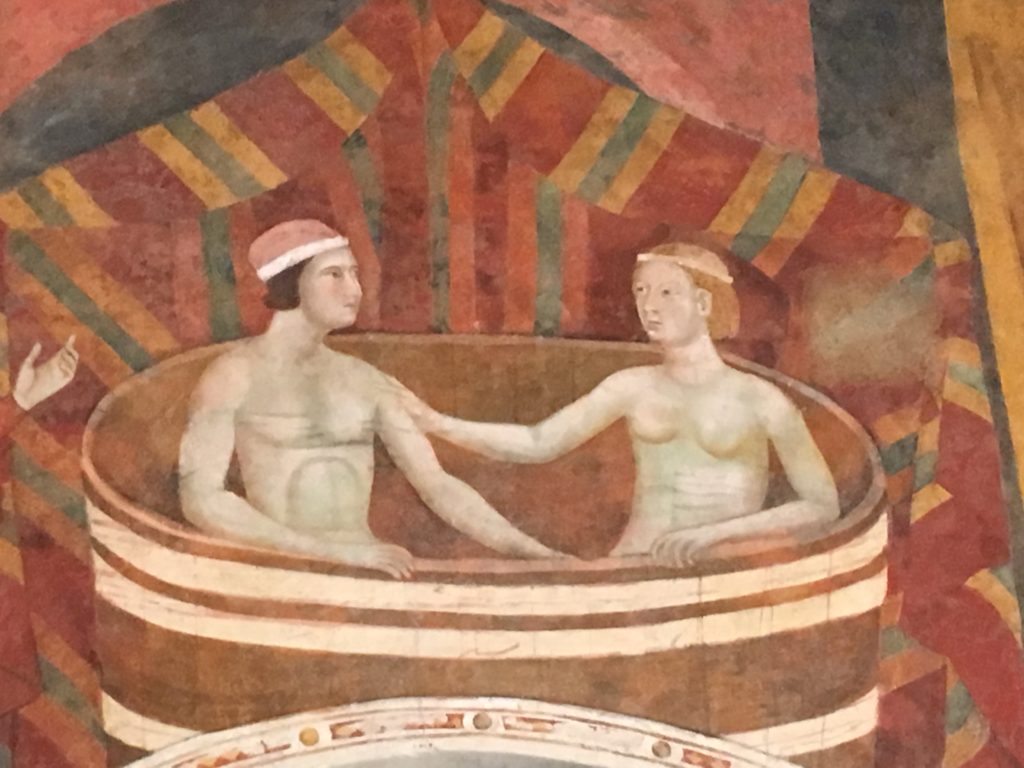
Frescoes in the Duomo of San Gimignano
The Duomo also contains an amazing number and variety of frescoes. Every wall on both sides of the nave is filled with frescoes, most dating from the 1300s.
The vivid colors are original; the frescoes have never required restoration.

Get the audio guide and walk slowly around the frescoes, picking out scene after scene from the Old and New Testaments. Even if you’re not into Bible stories, you can’t help but be entranced by these frescoes. I enjoy studying the clothing and the facial expressions for inspiration.
Pick up a ticket to the Museum of Sacred Art in the Duomo that includes an audio guide from this link.
Other Suggestions for San Gimignano
Climb to the top of the ruined Fortezza (fortress) at the highest point in San Gimignano to enjoy spectacular views over the countryside.
Even when the main street is heaving with sweaty tourists, the Fortezza is usually virtually empty.
San Gimignano 1300
One of my favorite museums in San Gimignano is San Gimignano 1300, located in a side street close to the Piazzale Comunale.
Here you’ll view a scale model of San Gimignano as it appeared in 1300.
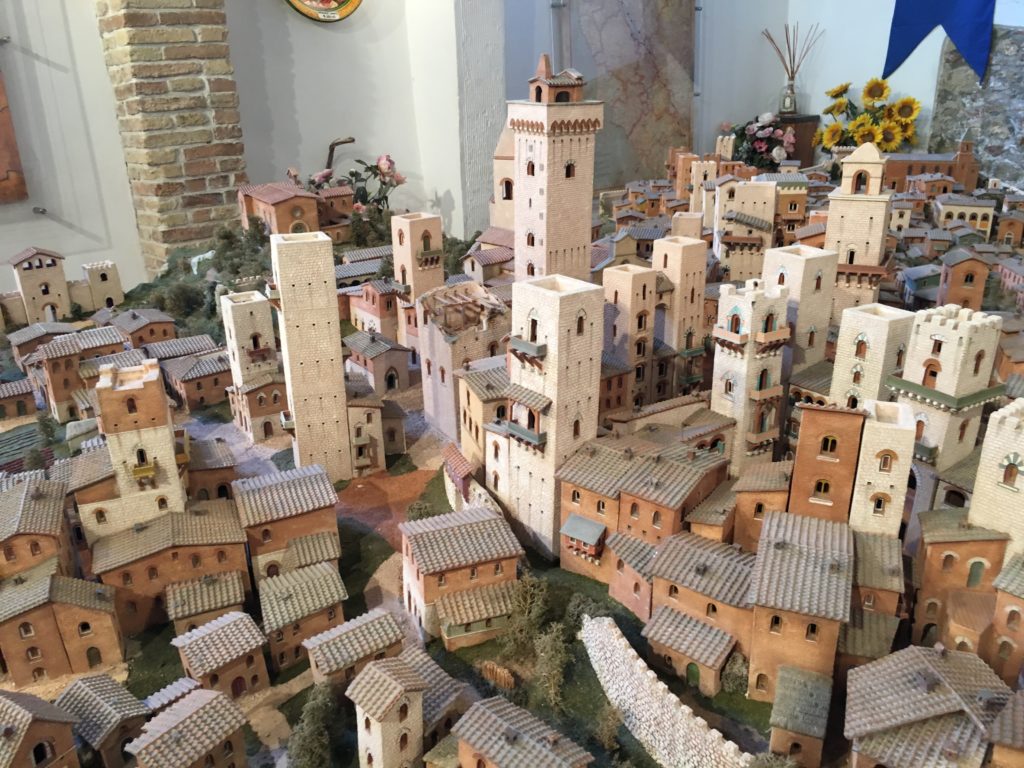
You may also be able to pick up a copy of The Towers of Tuscany at San Gimignano 1300. I first visited the exhibit back in 2011 when I was researching my novel, and have returned many times since.
Grosseto – Il Giardino dei Tarocchi
Fancy a break from old style art (much as we love it)? Then get a fabulous modern art fix at The Tarot Garden (Il Giardino dei Tarocchi).
Here is where you’ll see a stunning collection of whimsical sculptures by modern artist Niki Saint Phalle. The sculptures are based on the Tarot cards and are a must-see if you’re looking for something far off the beaten path.
And the sculptures are a nice break from the medieval and Renaissance masterpieces that make up most of the art in Tuscany.
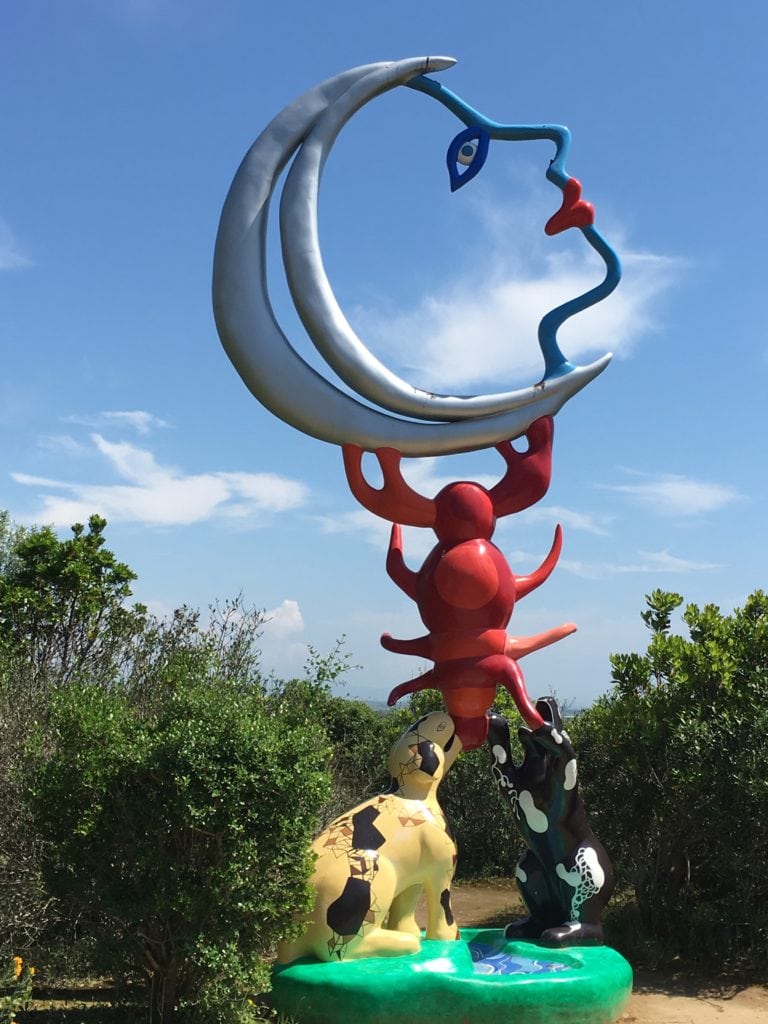
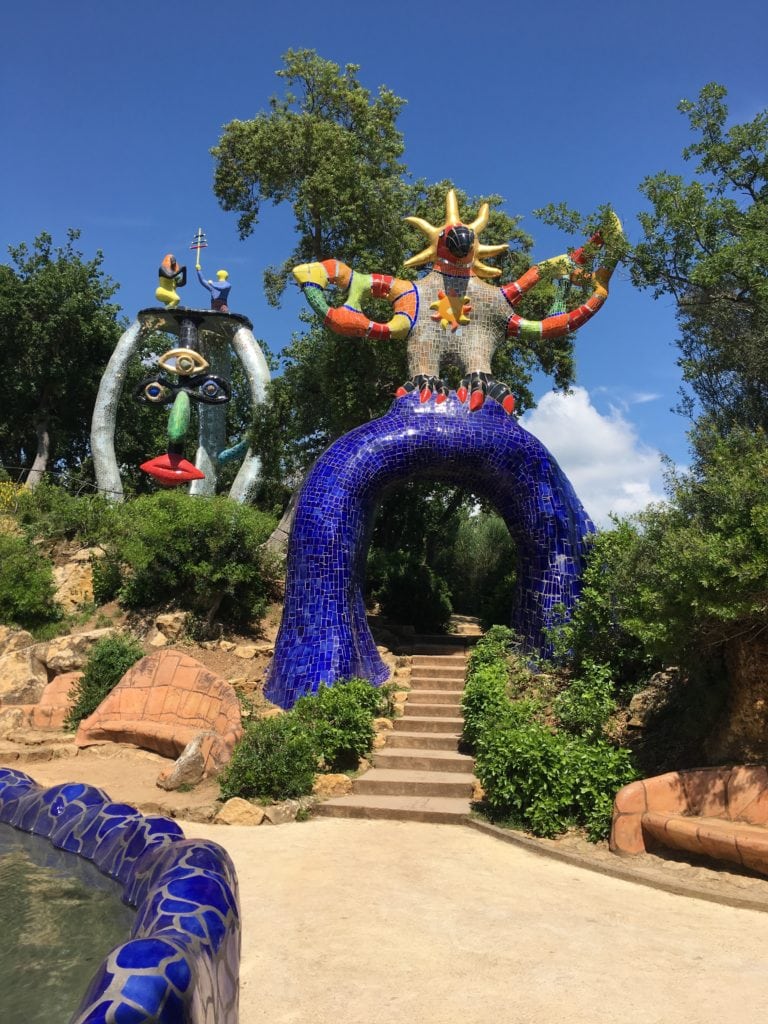
We spent a full hour wandering around the gardens on a hot afternoon in September. Although I took tons of photographs, they don’t do the sculptures justice. You have to visit the gardens and touch the sculptures, walk inside them, and sit on them to fully appreciate them.
When you go, check the website for the current opening hours. Usually, the gardens are open daily from April 1 to October 15 from 2:30 pm to 5:30 pm. In the winter, the gardens are open only on the first Saturday of the month from 9 am to 1 pm.
Where to Stay in Tuscany
I don’t think I’ve ever stayed in a sub-standard place in Tuscany. You are spoiled for choice! While prices will not be low if you’re looking for comfort and convenience (my two must-haves!), you’ll be rewarded with gorgeous views, friendly proprietors and il dolce vita!
Here are four of my favorite places I’ve stayed around Tuscany:
- Sant’Antonio Country Resort near Montelpulciano: Fantastic place to kick back and relax. Stay for a week! I write a whole post about my experience staying there.
- Agriturismo Casanova di Pescille near San Gimignano: You’ll need a car, but this place (and a handful more in the area) is just about perfect.
- Serristori Palace Residence in Florence: this spacious apartment is right on the river and about a ten minute walk into the center of Florence. Highly recommended.
- I Merli di Ada in Siena: this place is delightful! It’s very centrally located with lovely hosts and a comfy and spacious room.
Summary
My list of must-see art masterpieces barely scratches the surface of all the wonderful art you can enjoy when you slow down and take time to get to know Tuscany in all its glory.
Plan to spend two weeks enjoying the many beautiful towns and villages: Montalcino, Montepulciano, Lucca, Pisa, Volterra…the list goes on. Take a walking holiday or book into an agritourism property and settle in for a week of great food and long, warm days.
For more information about traveling in Tuscany see Exploring Tuscany, Umbria and La Dolce Vita and Where to Stay in Italy: My Best Picks.
Ciao!
